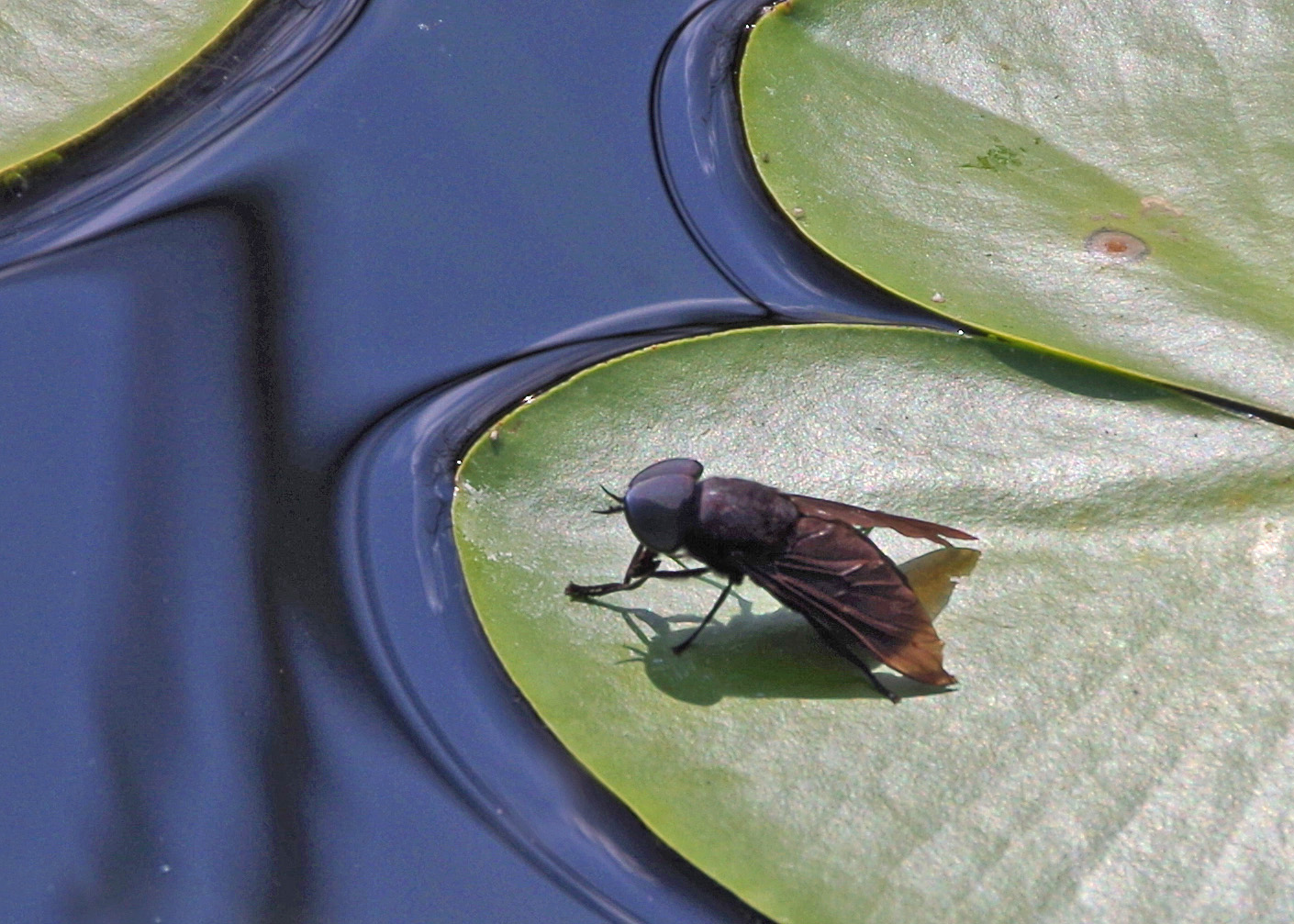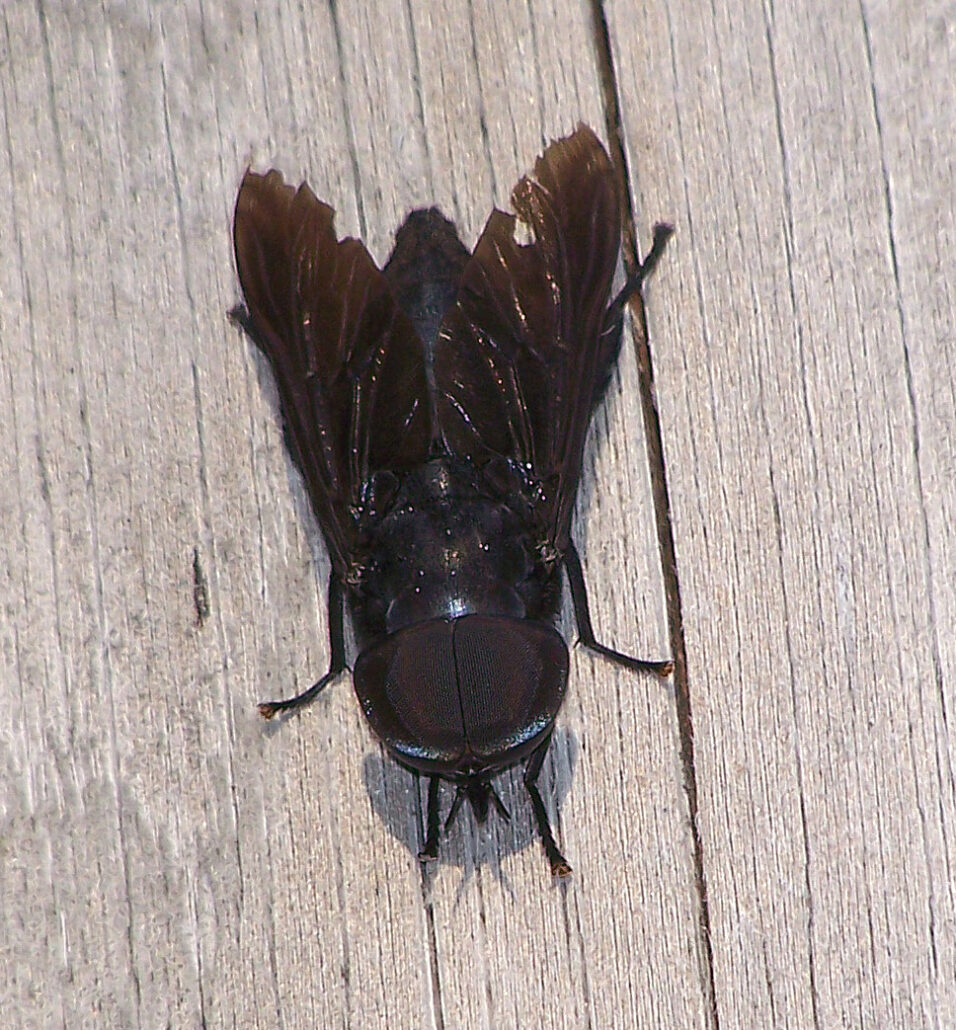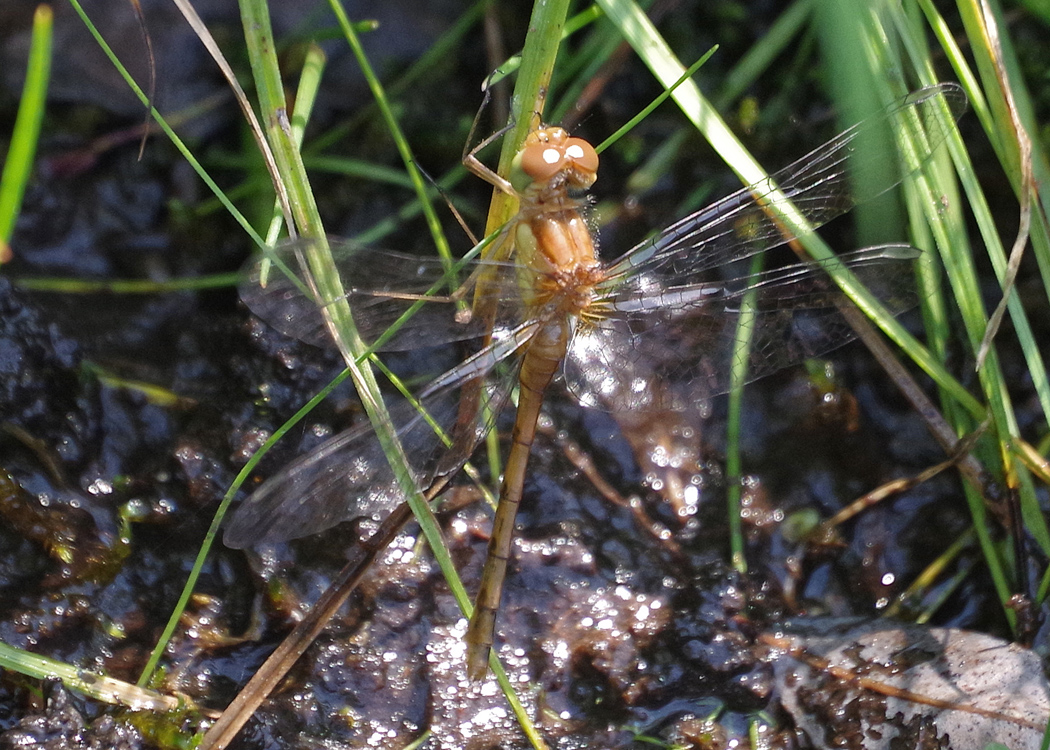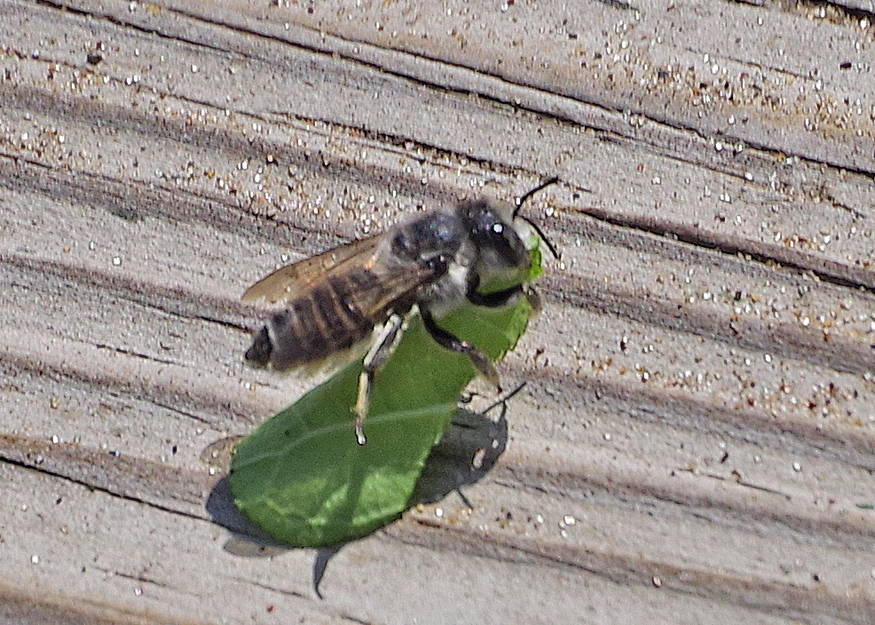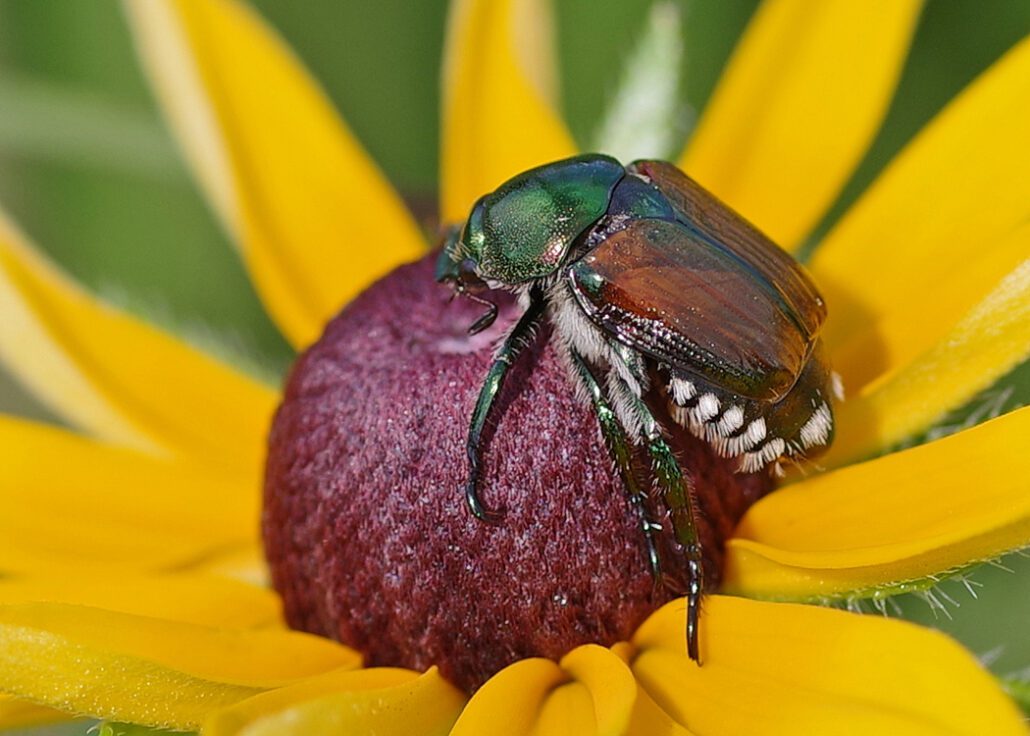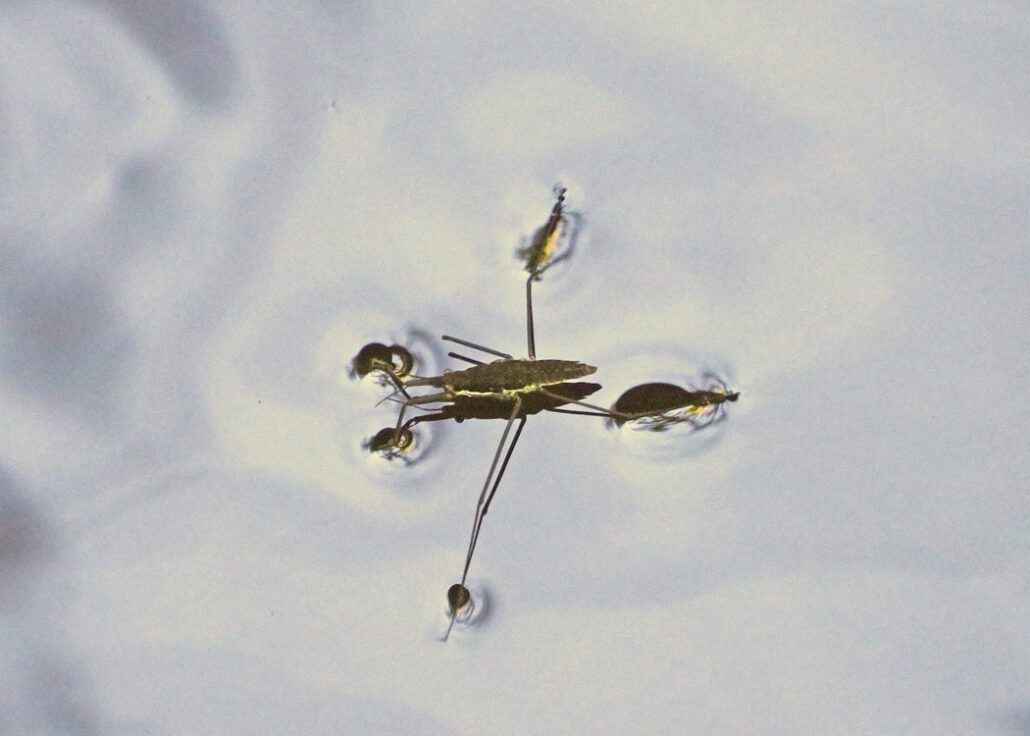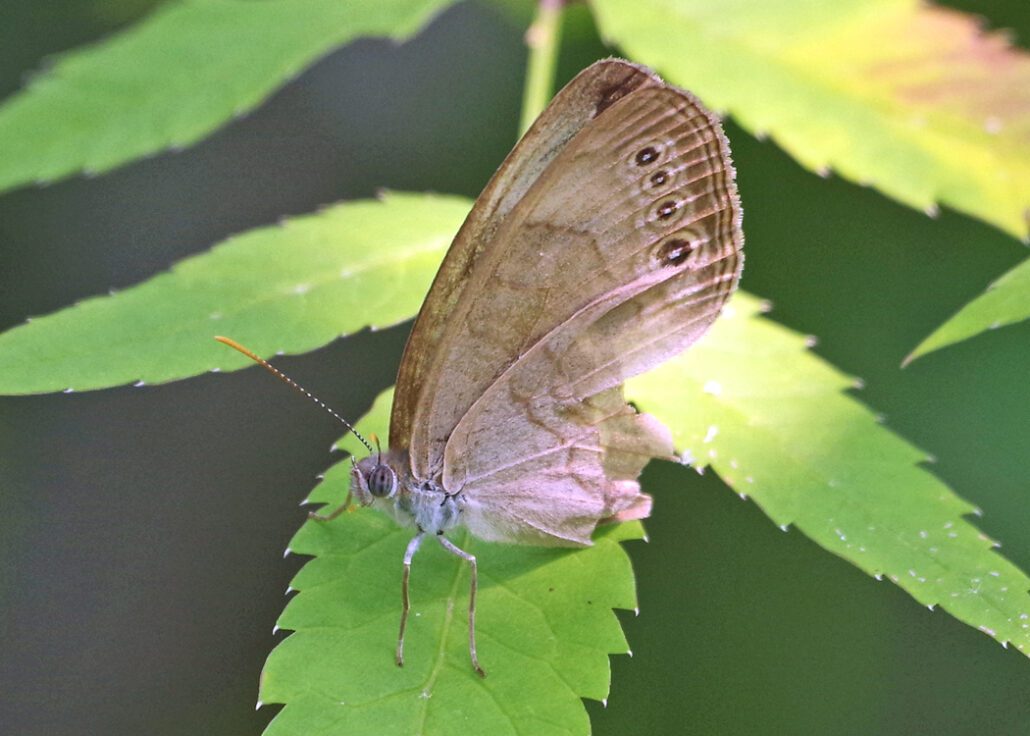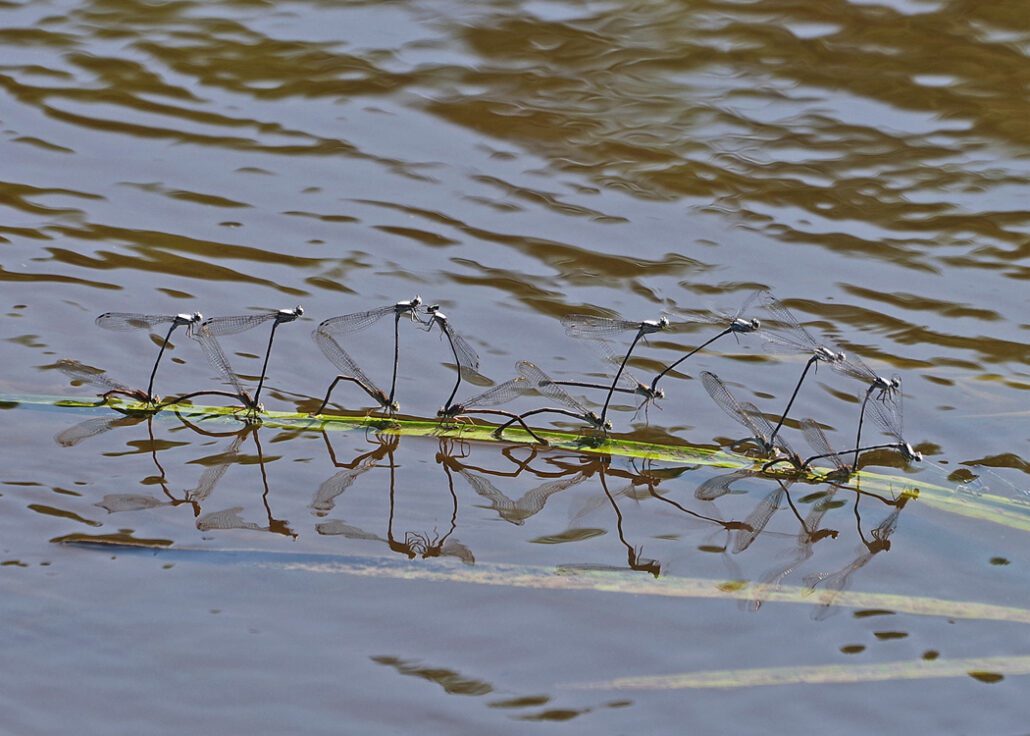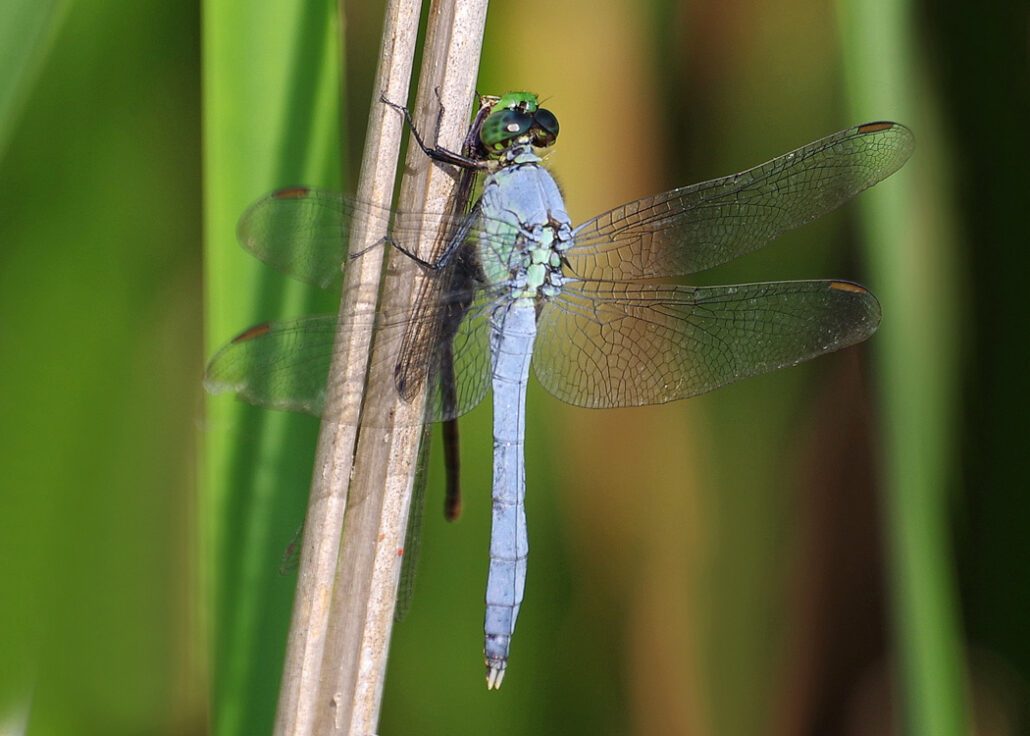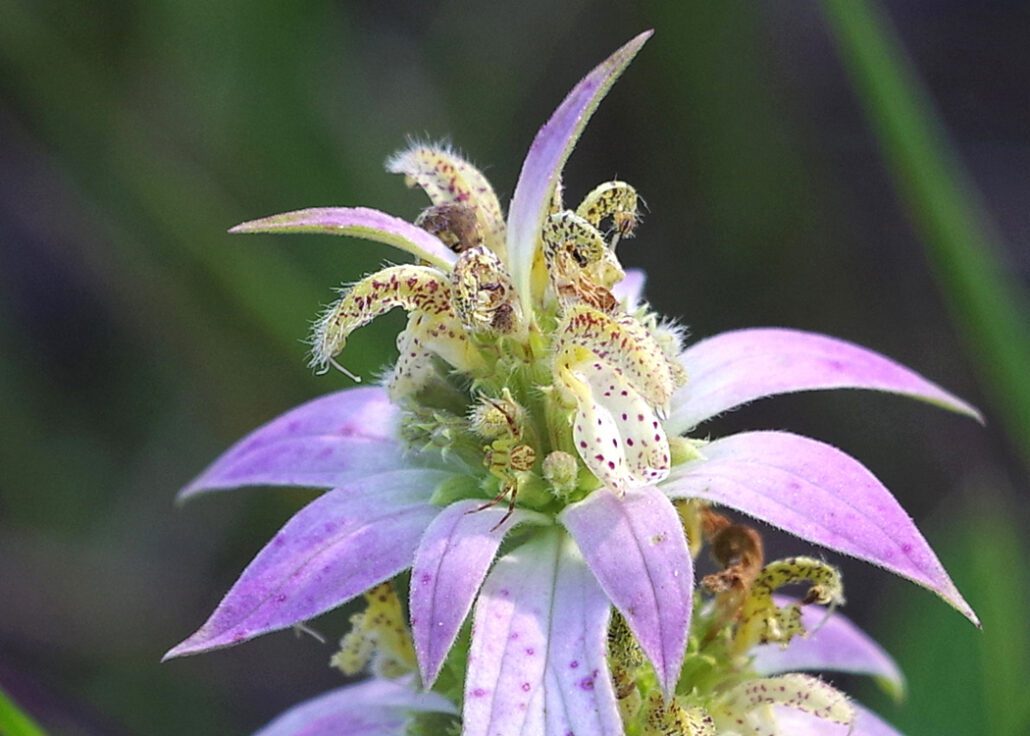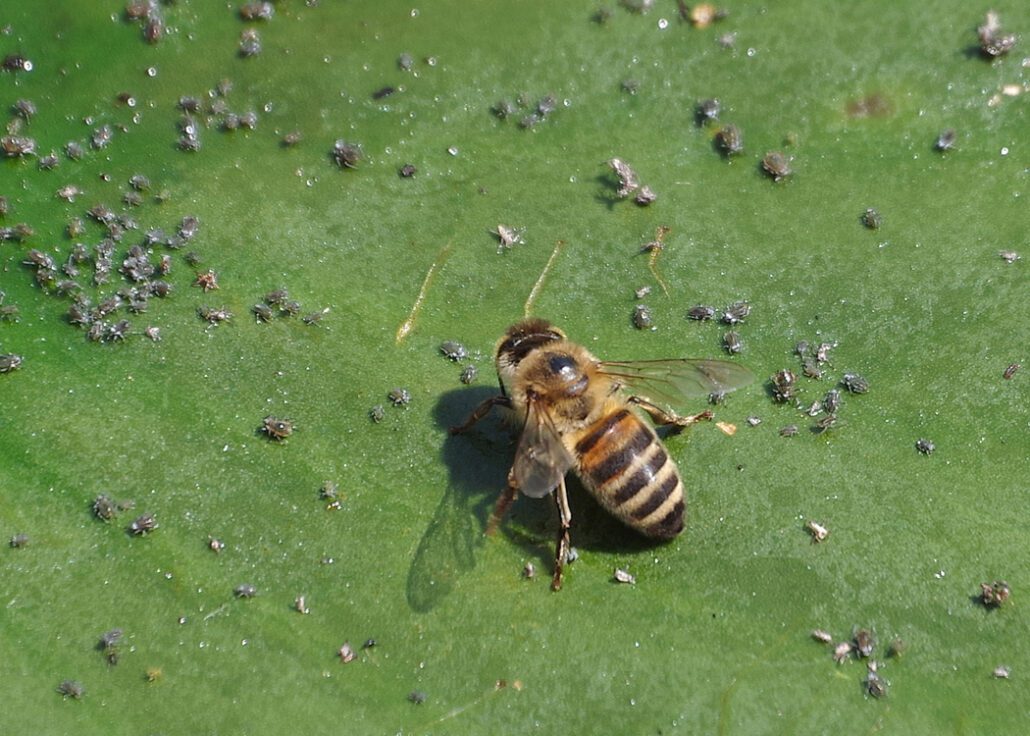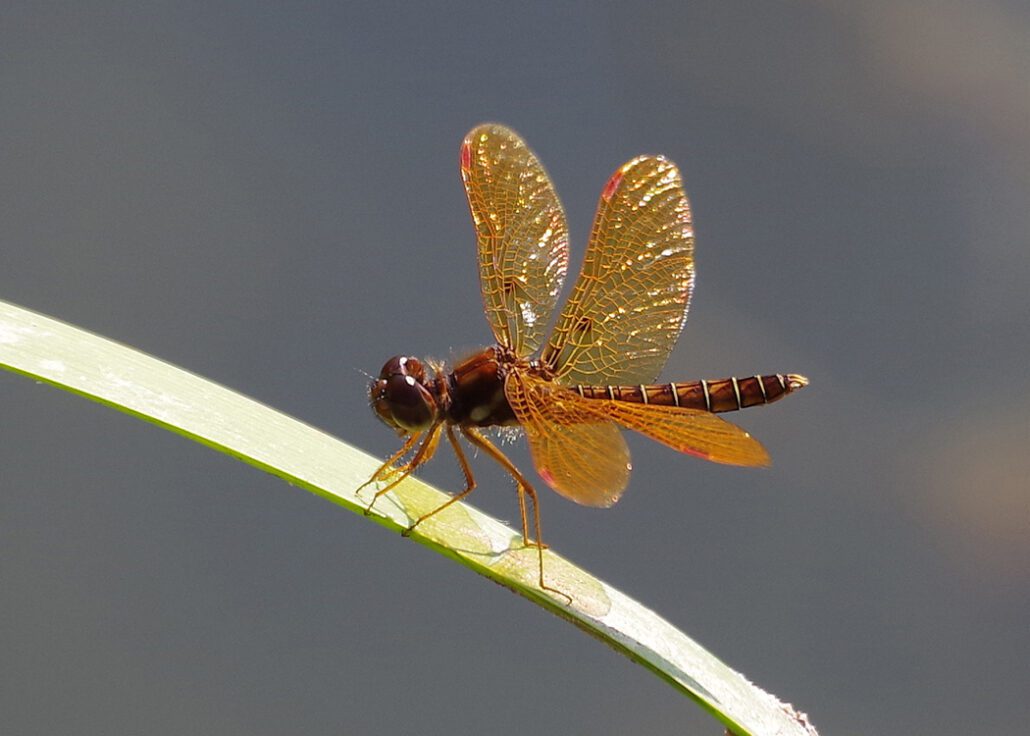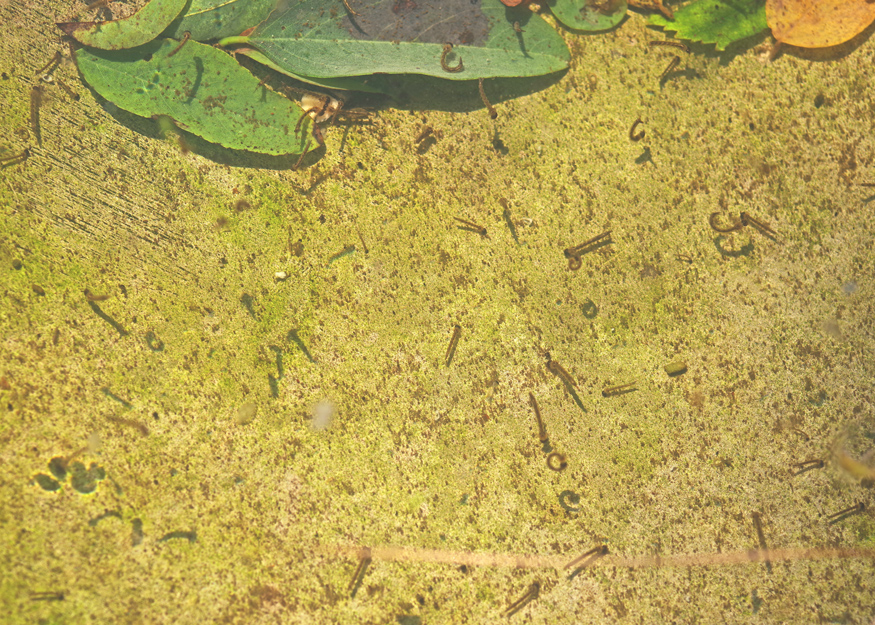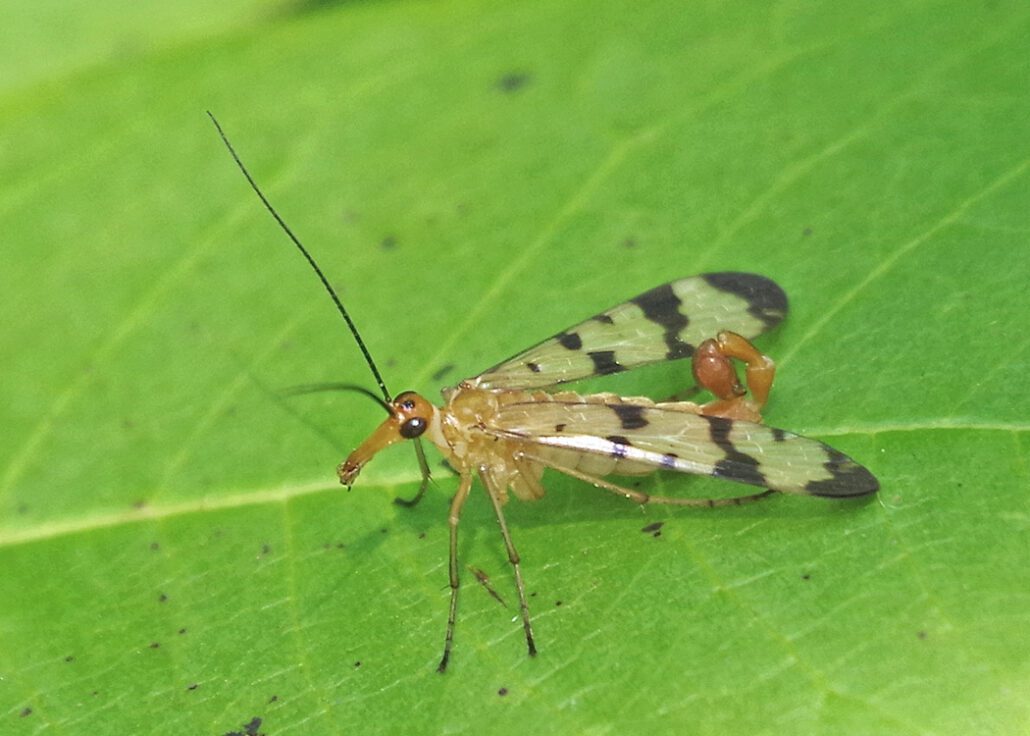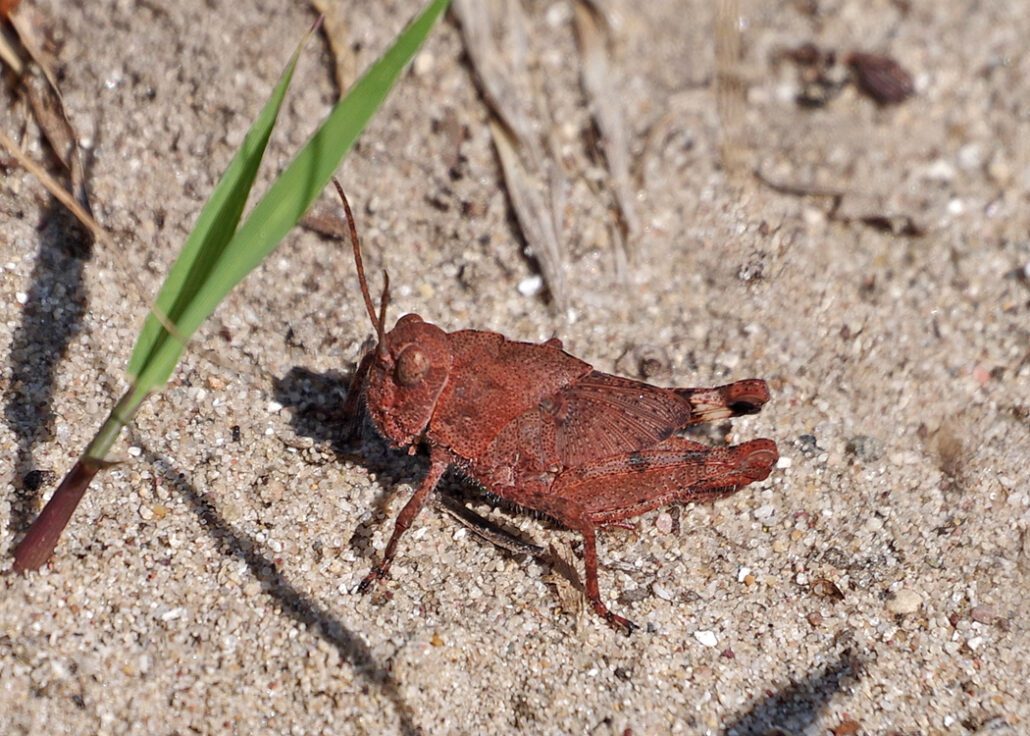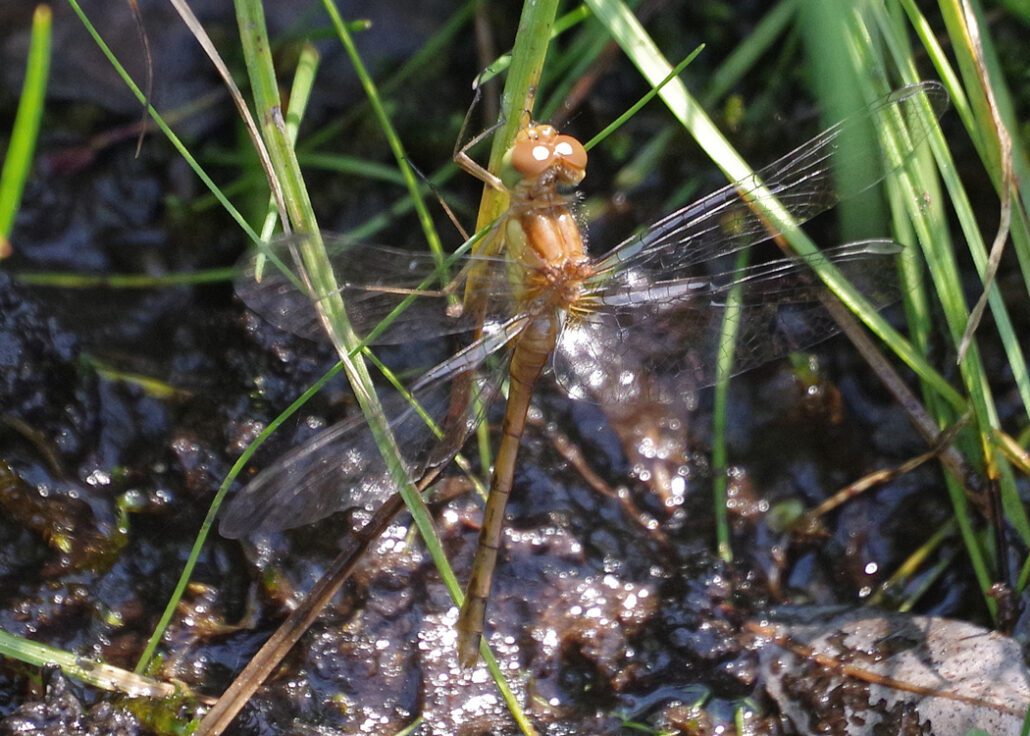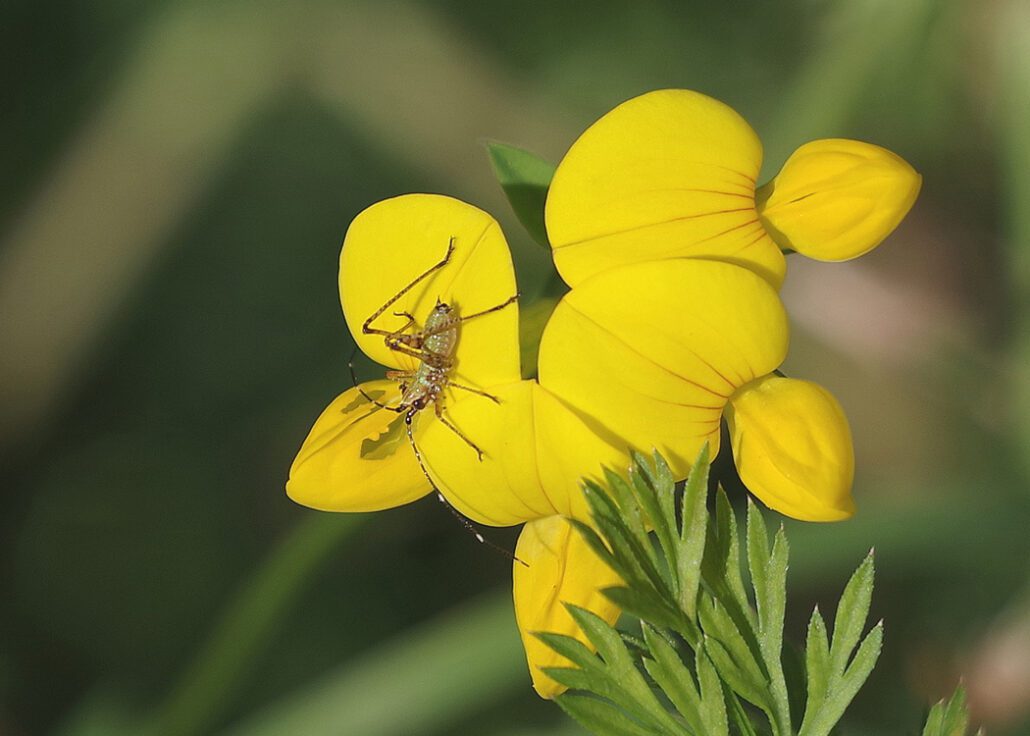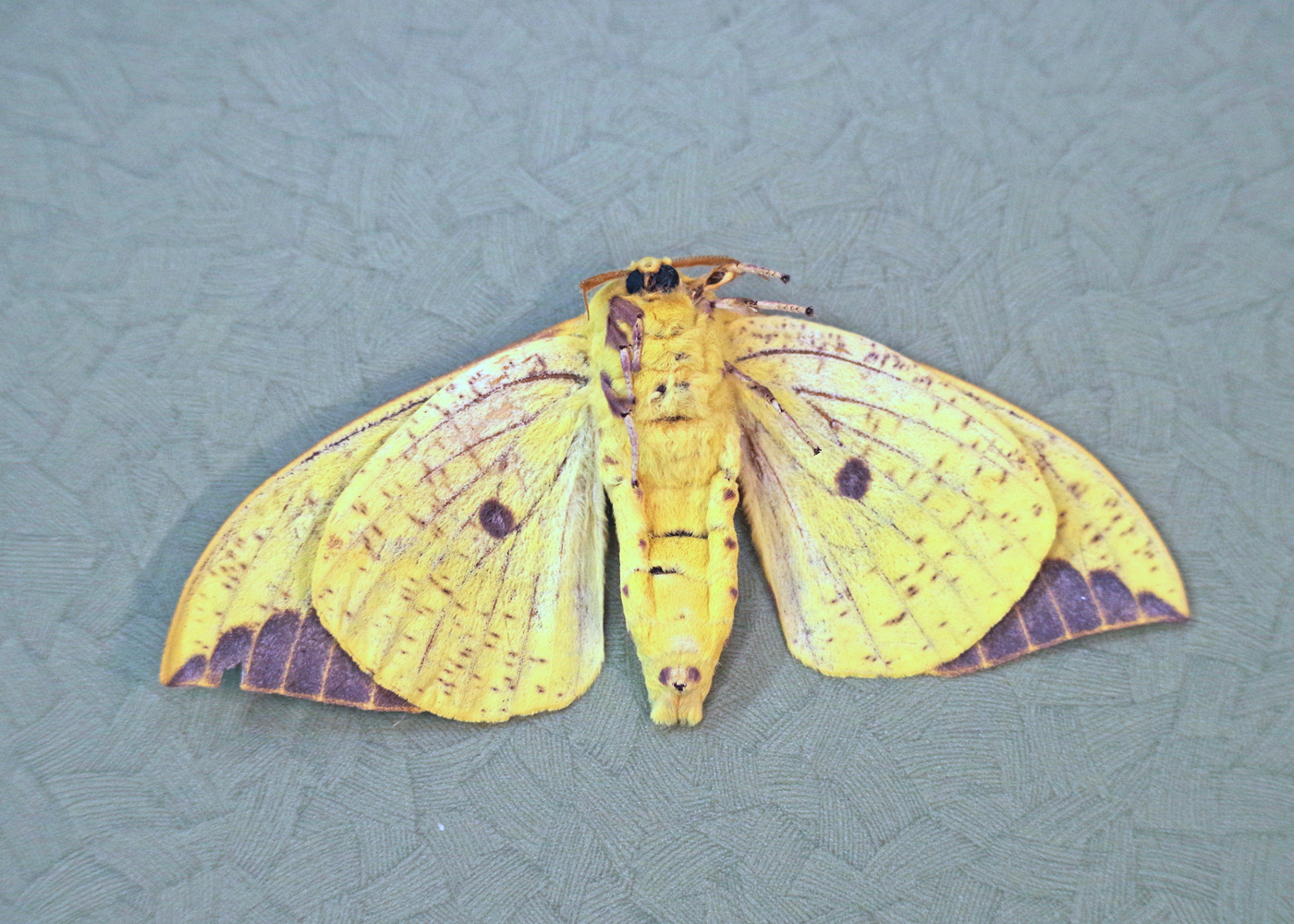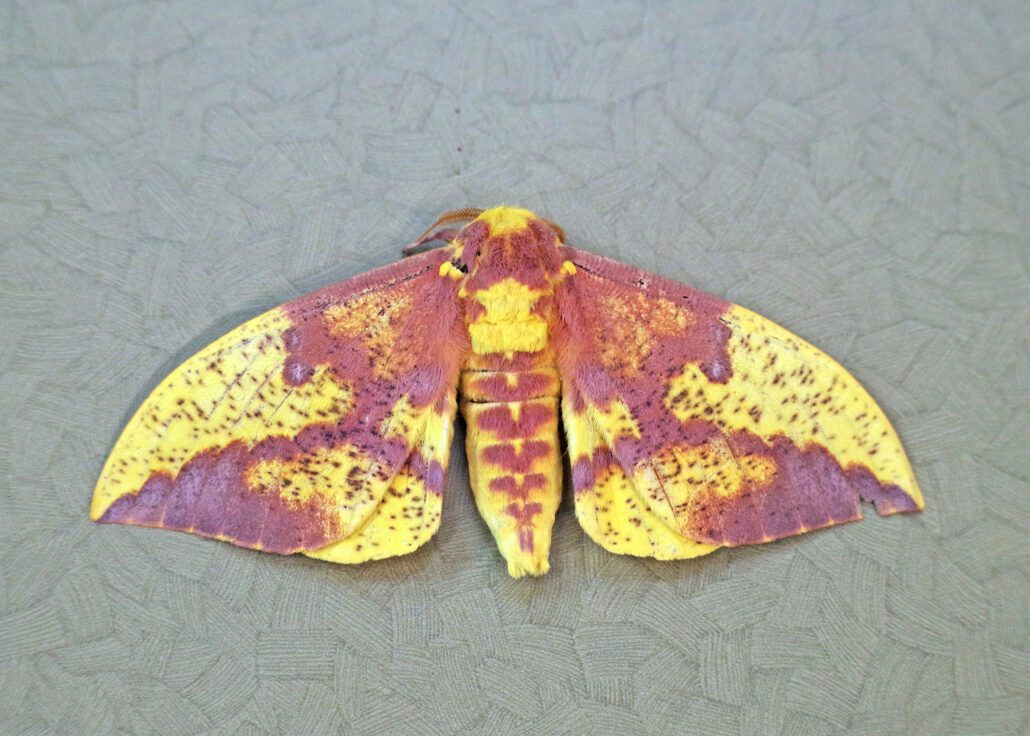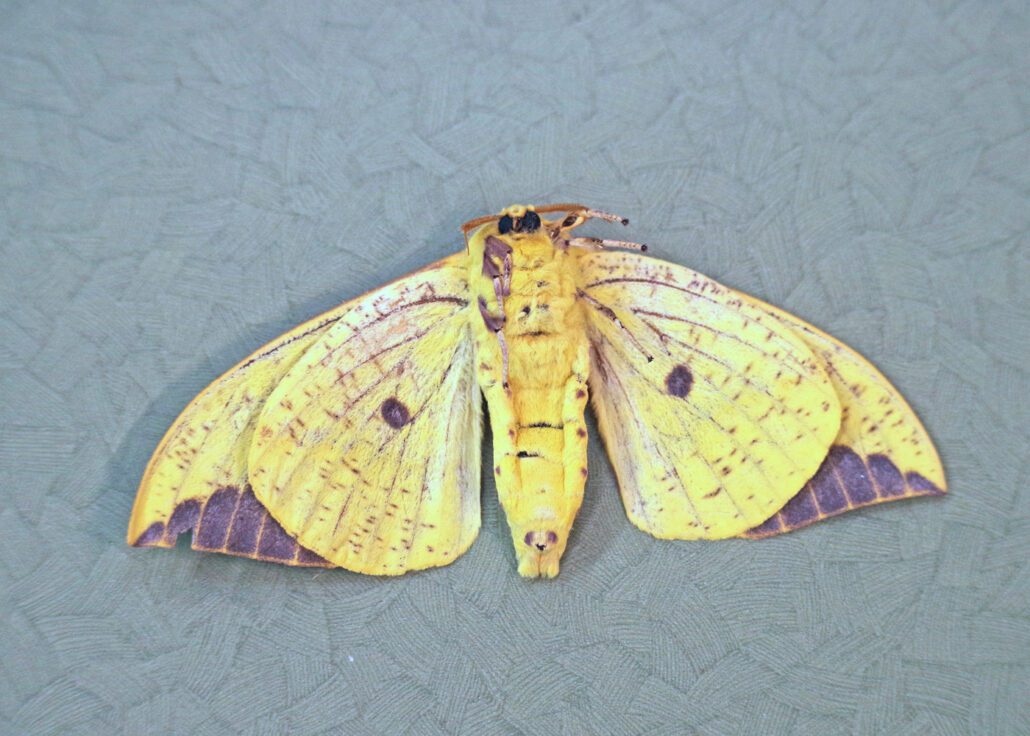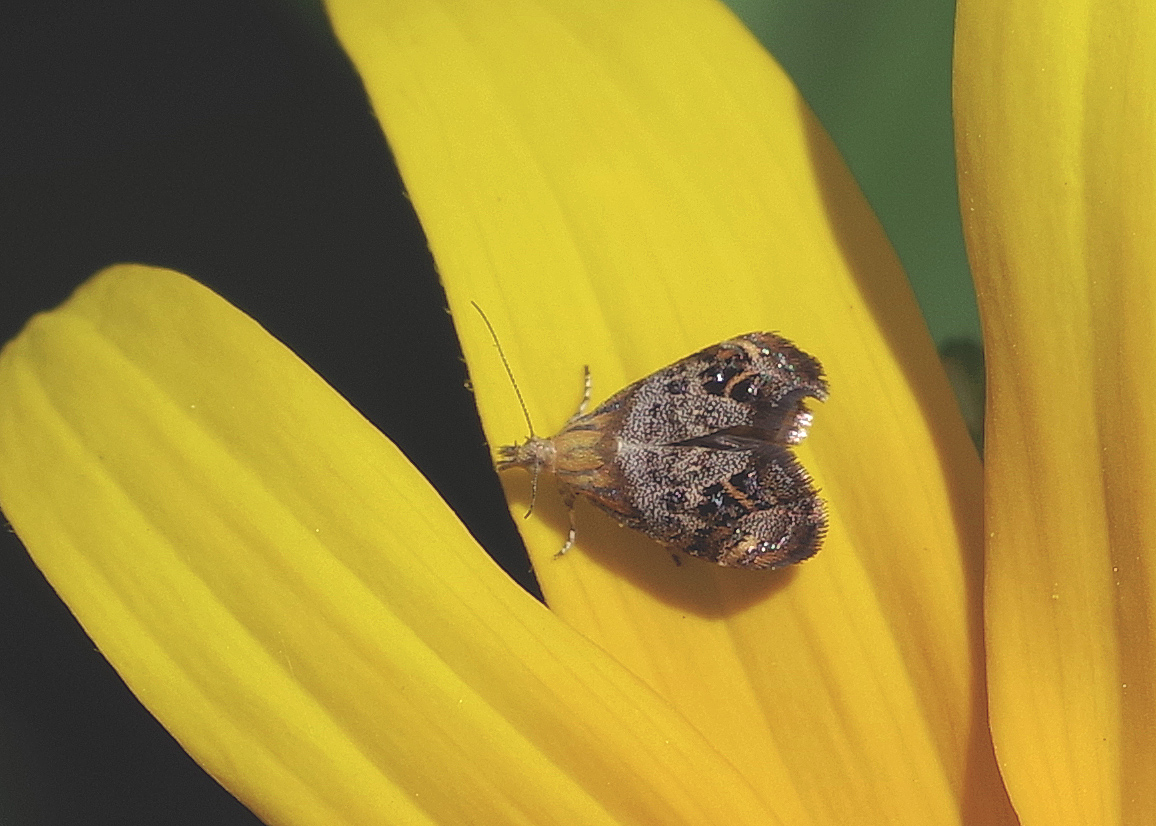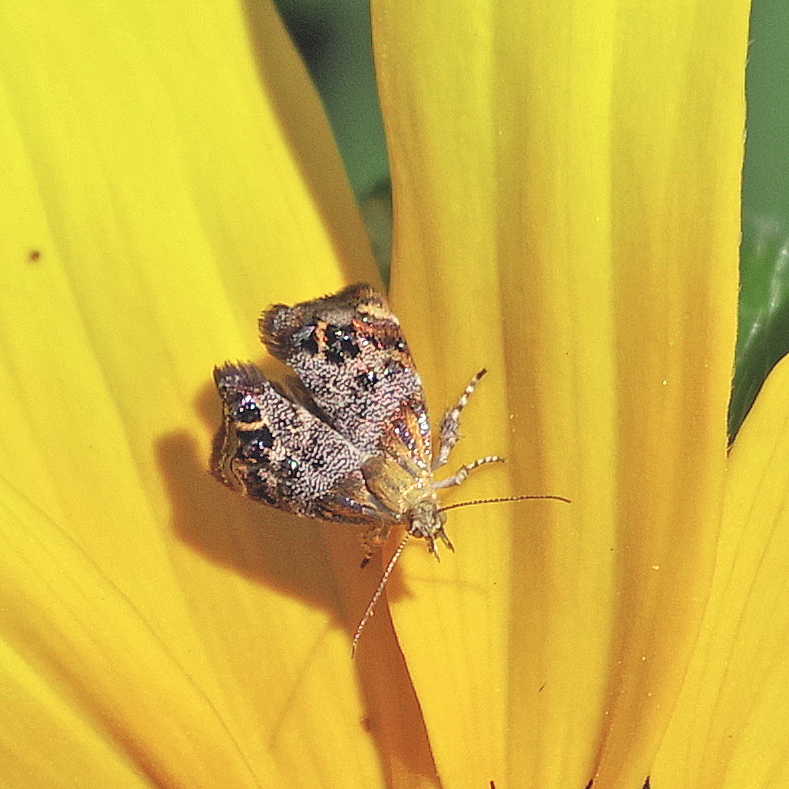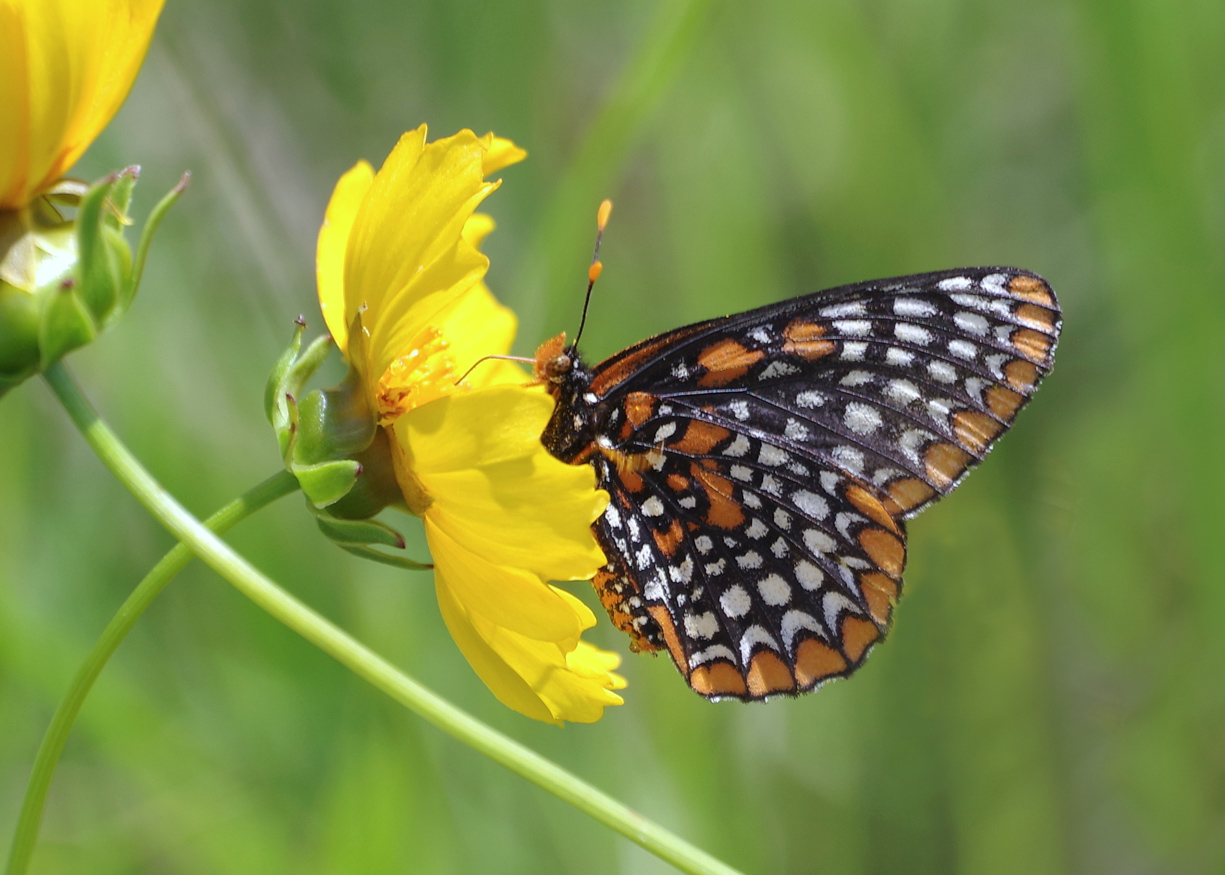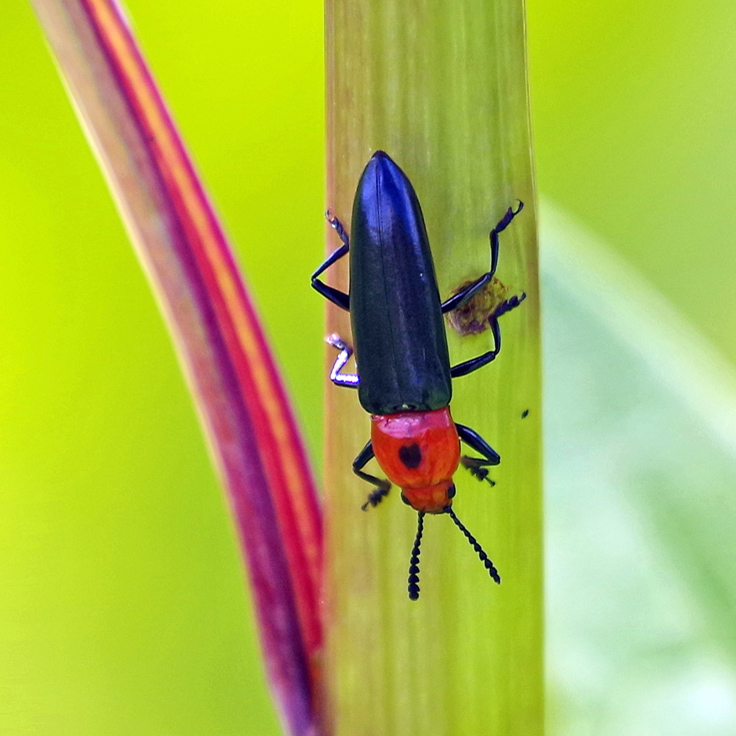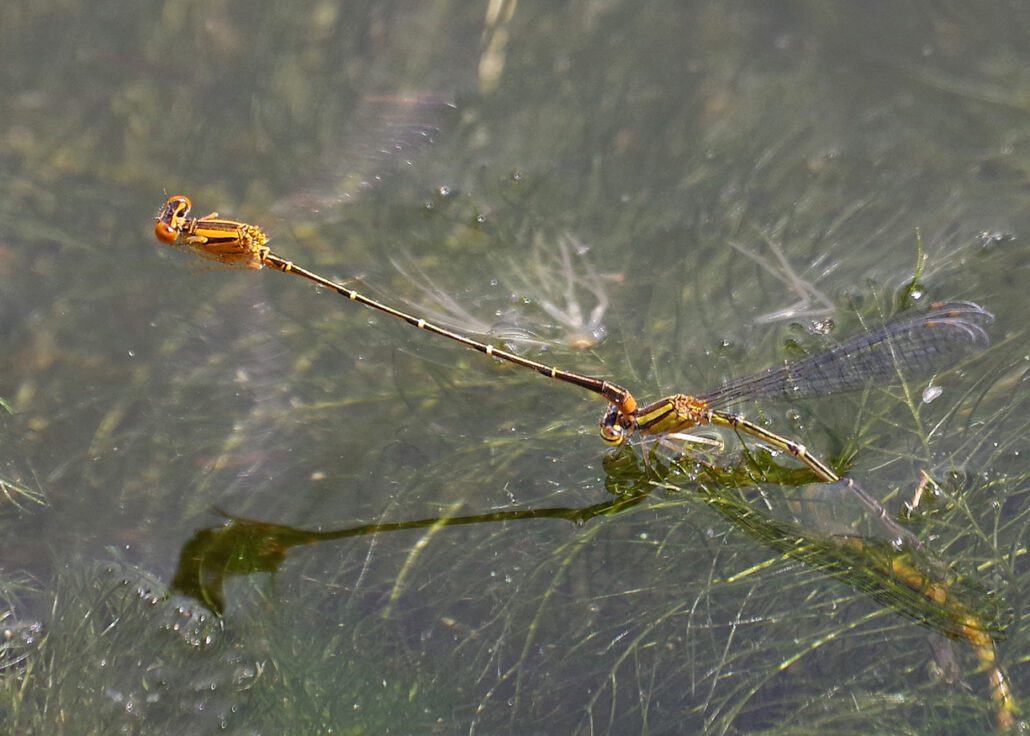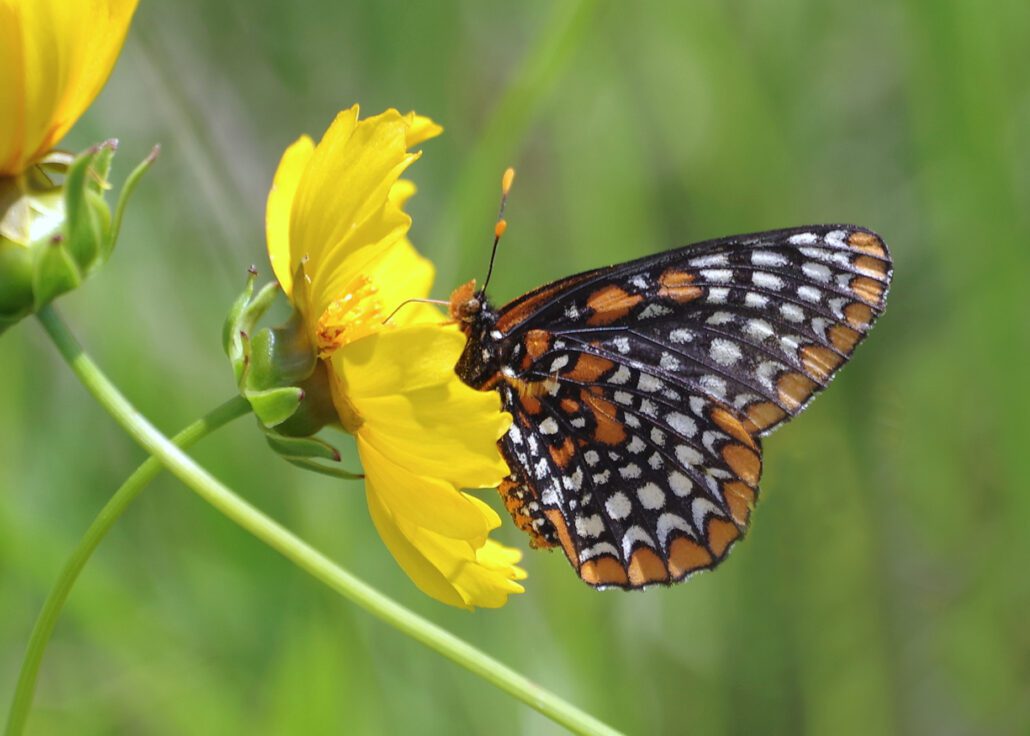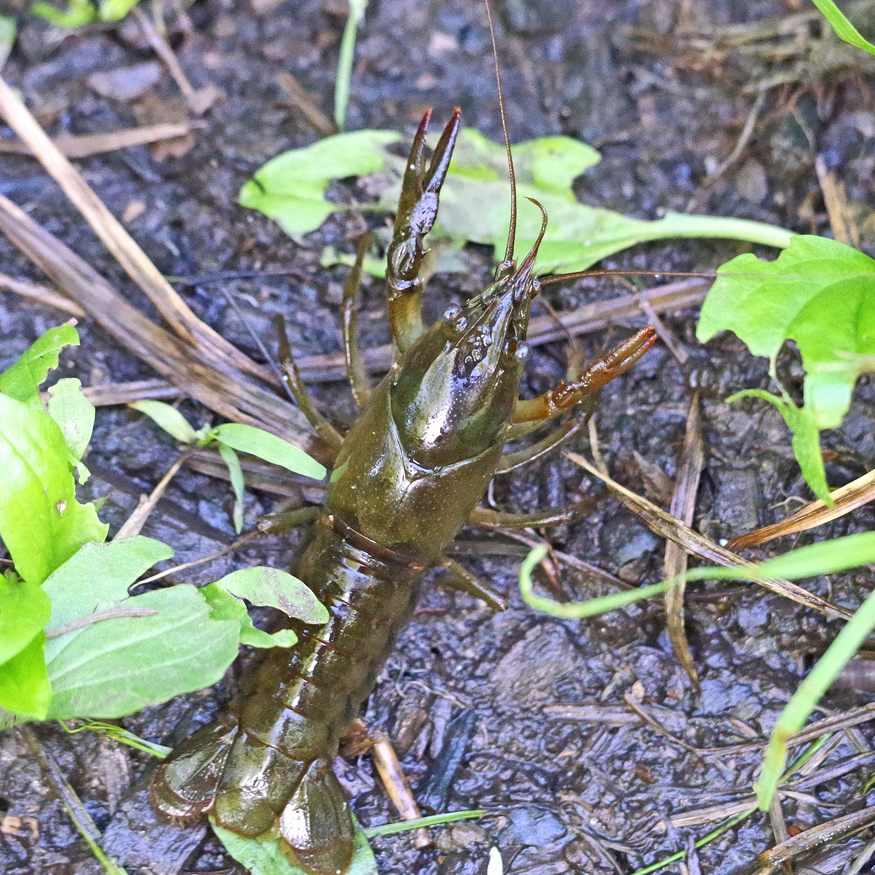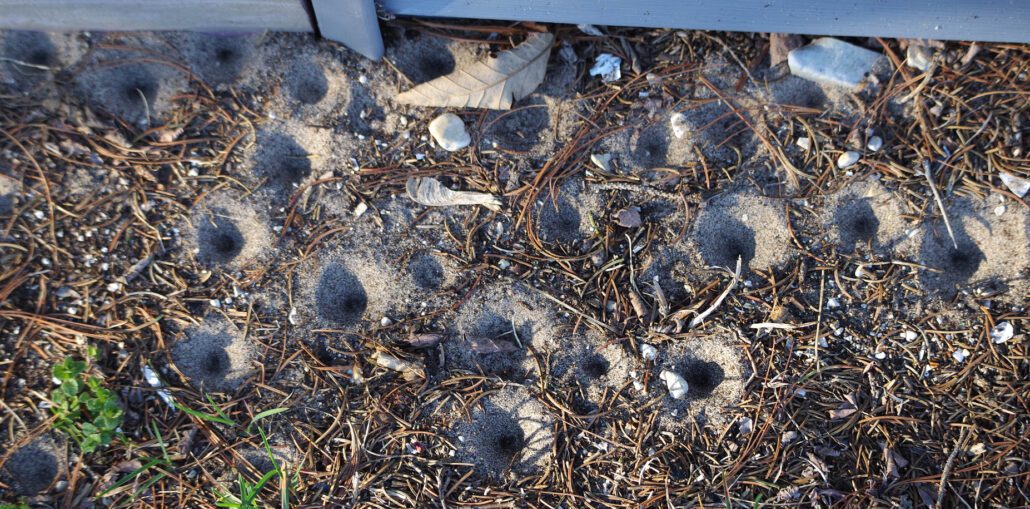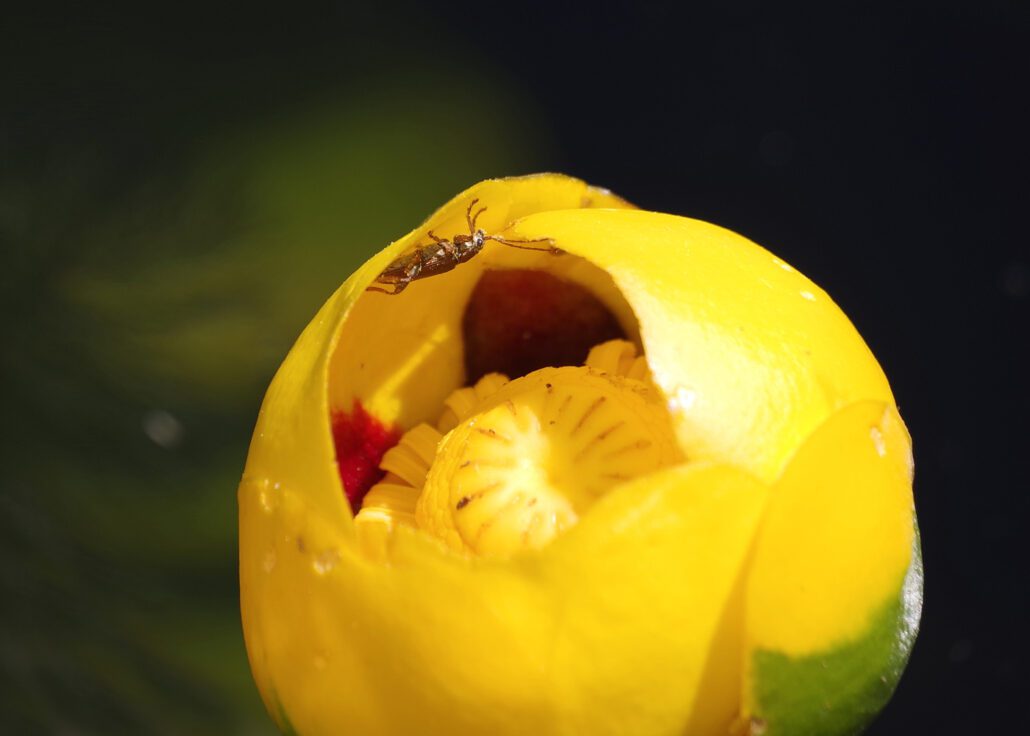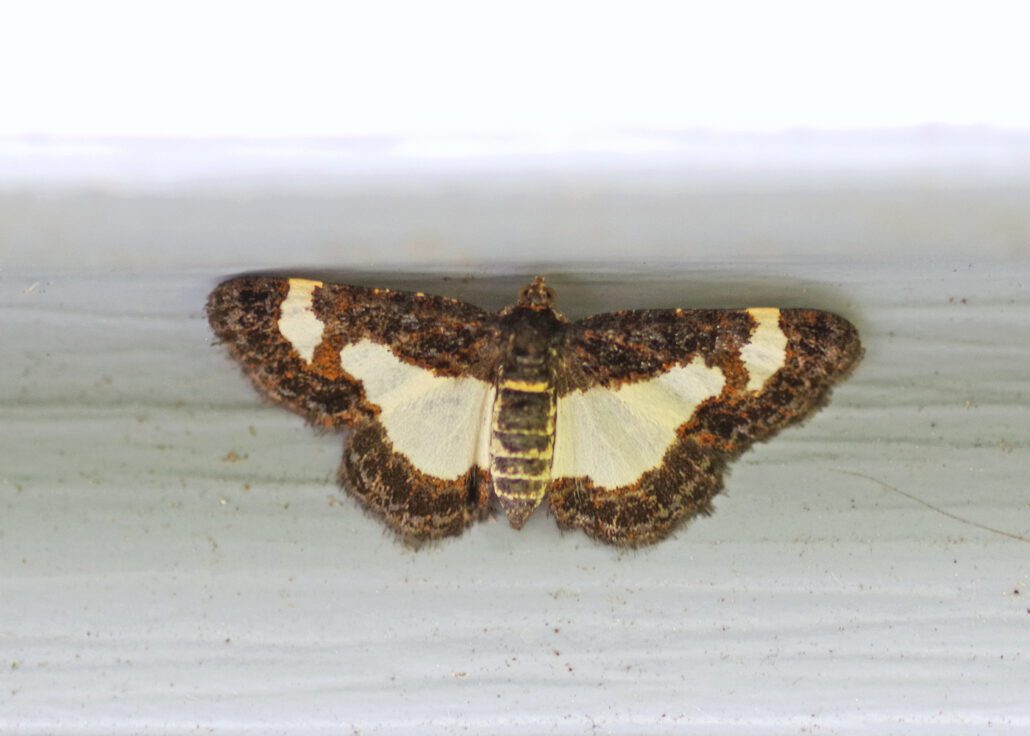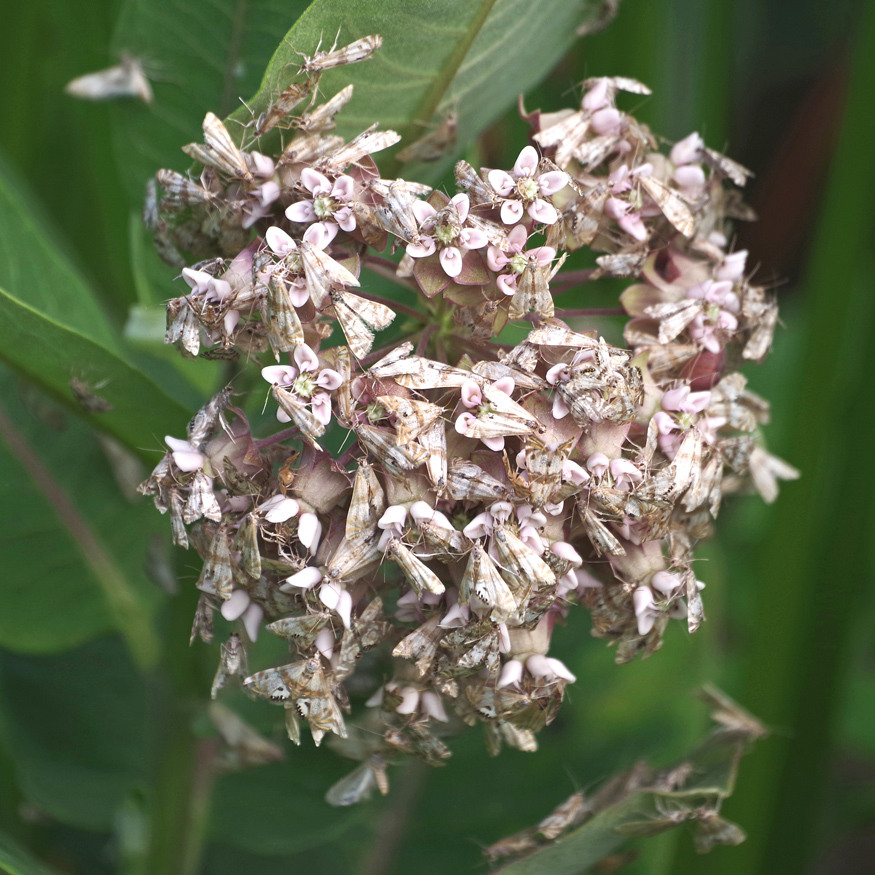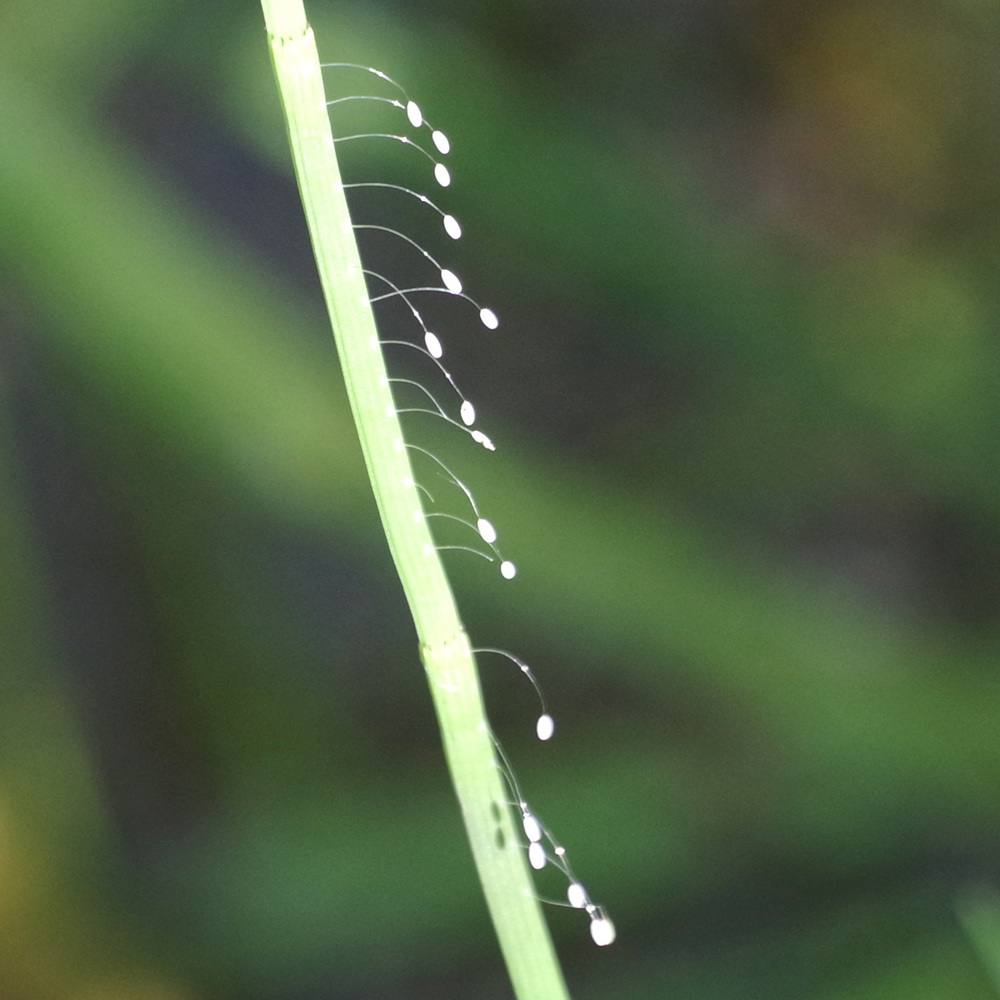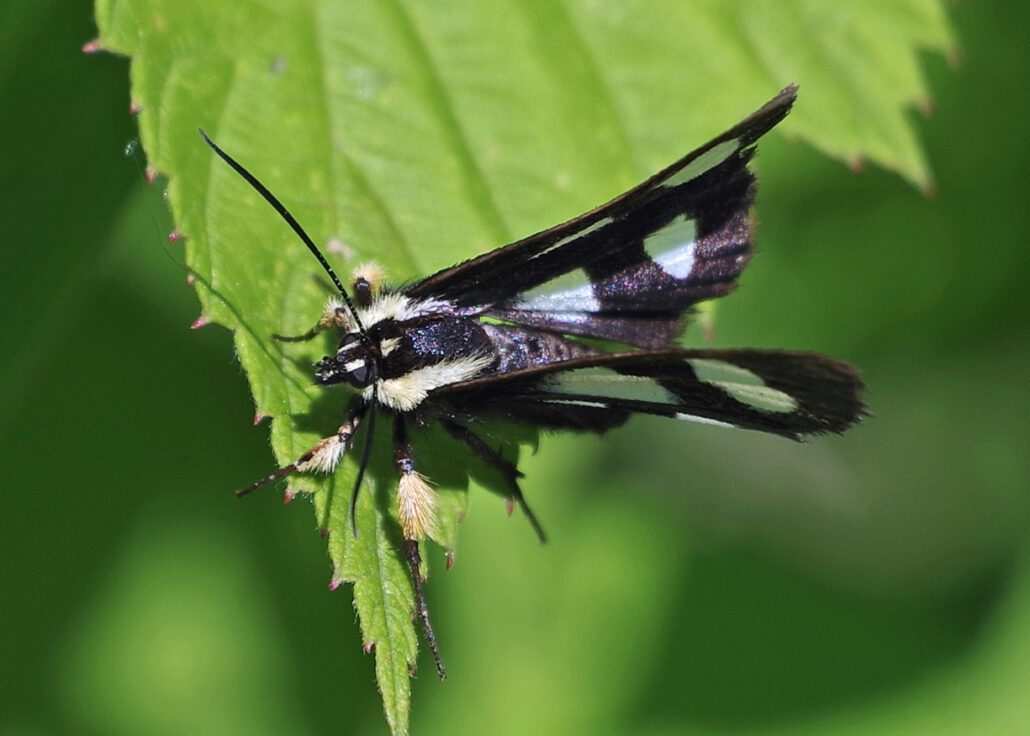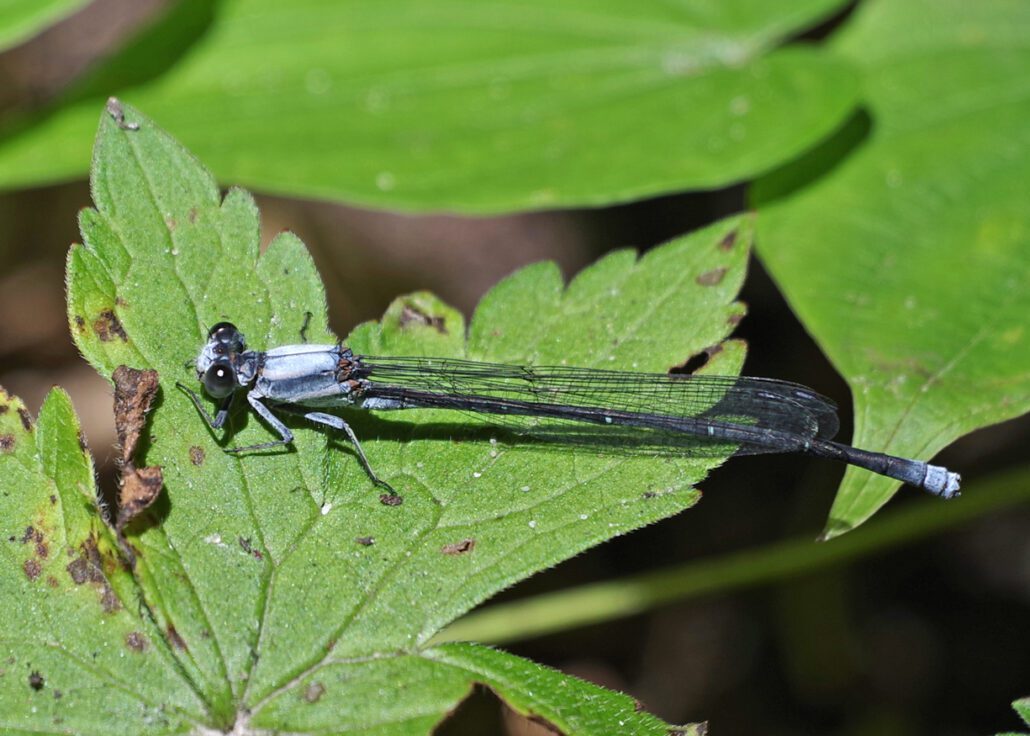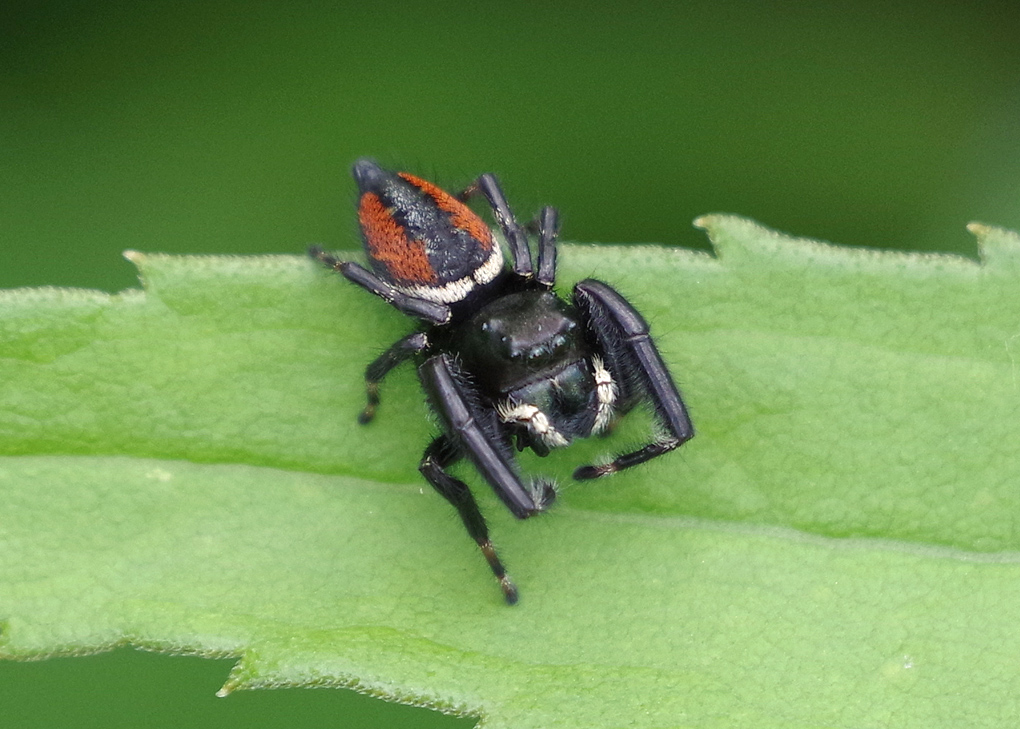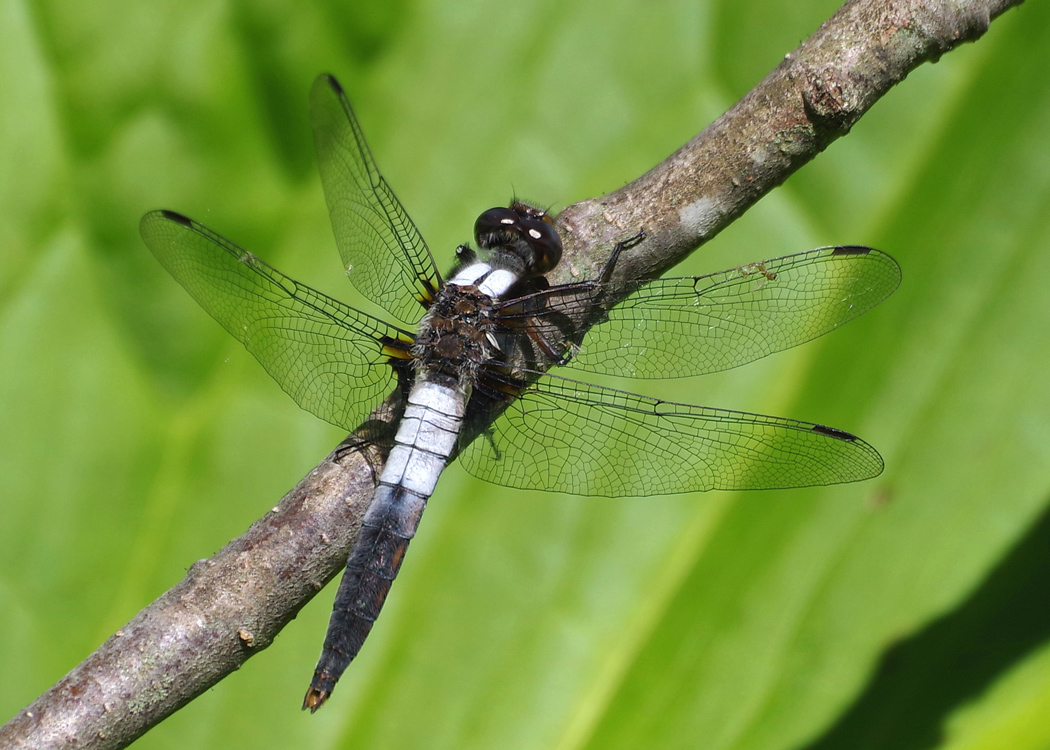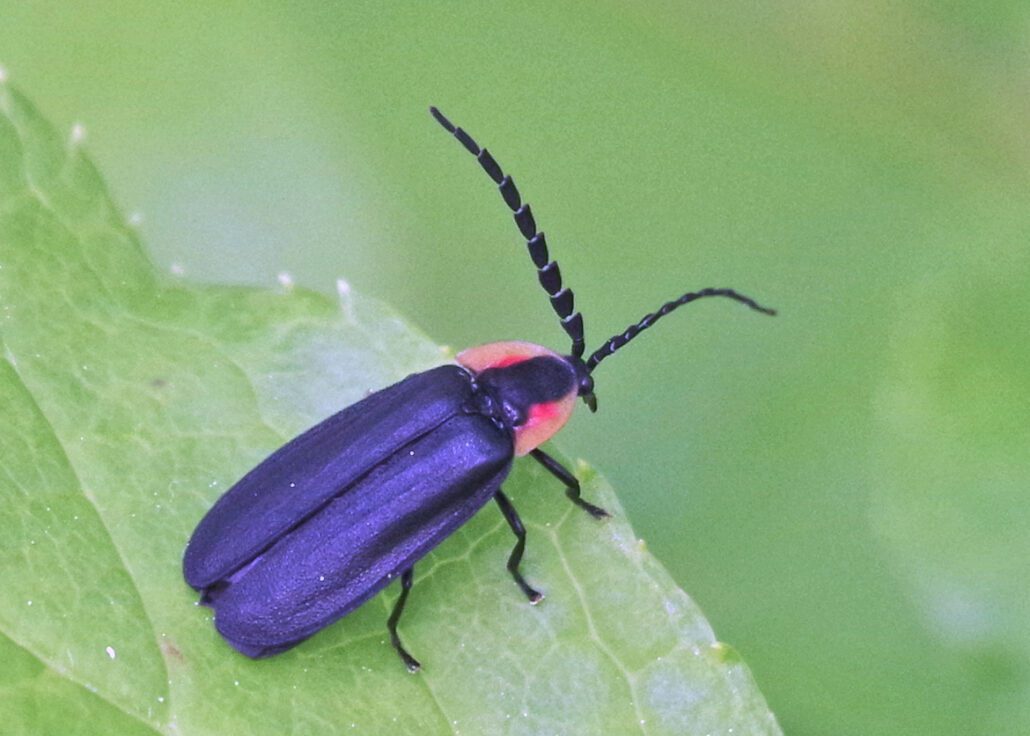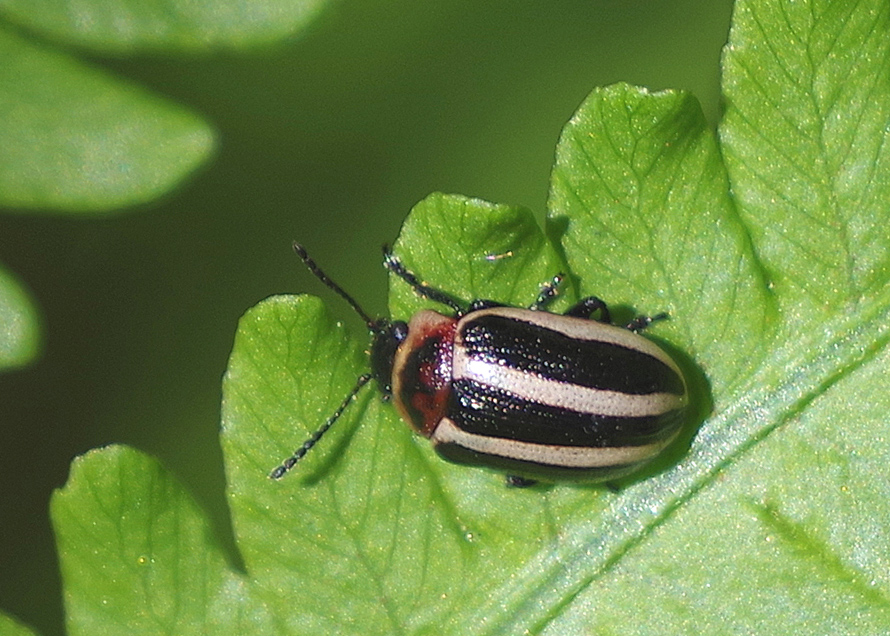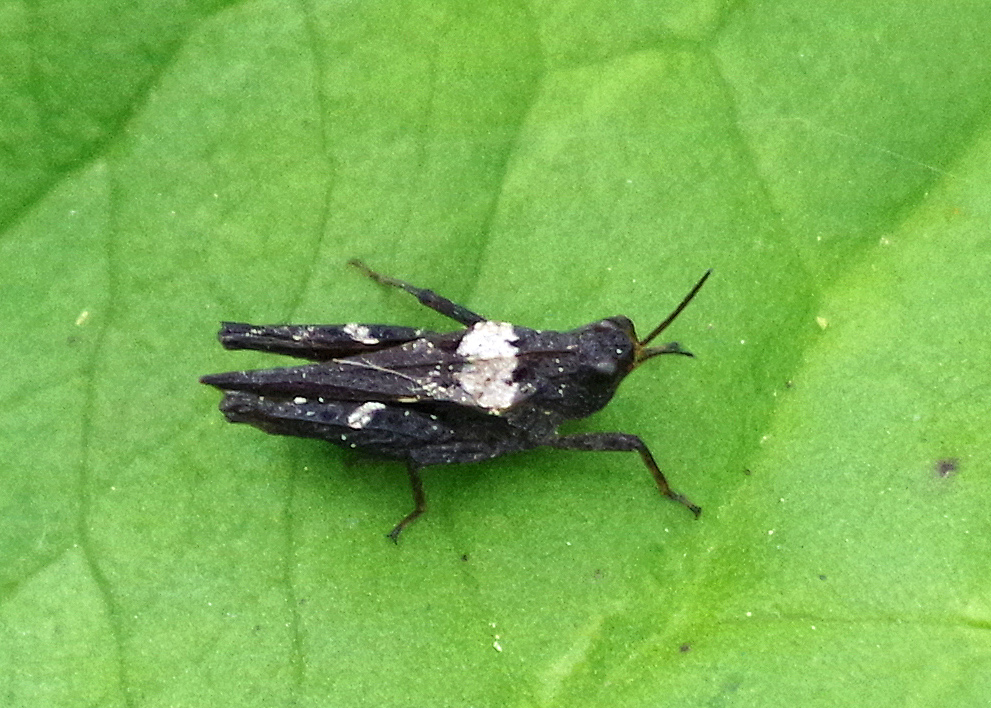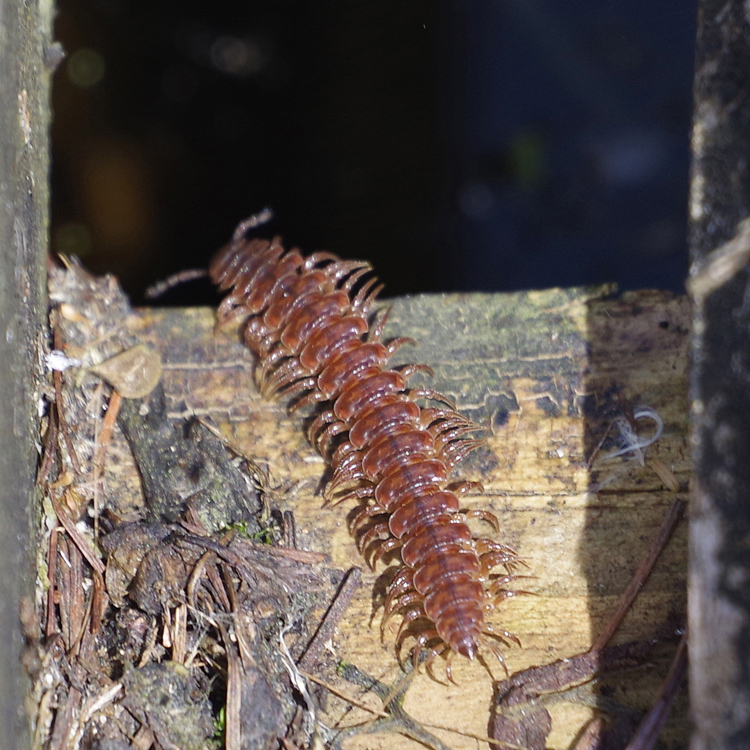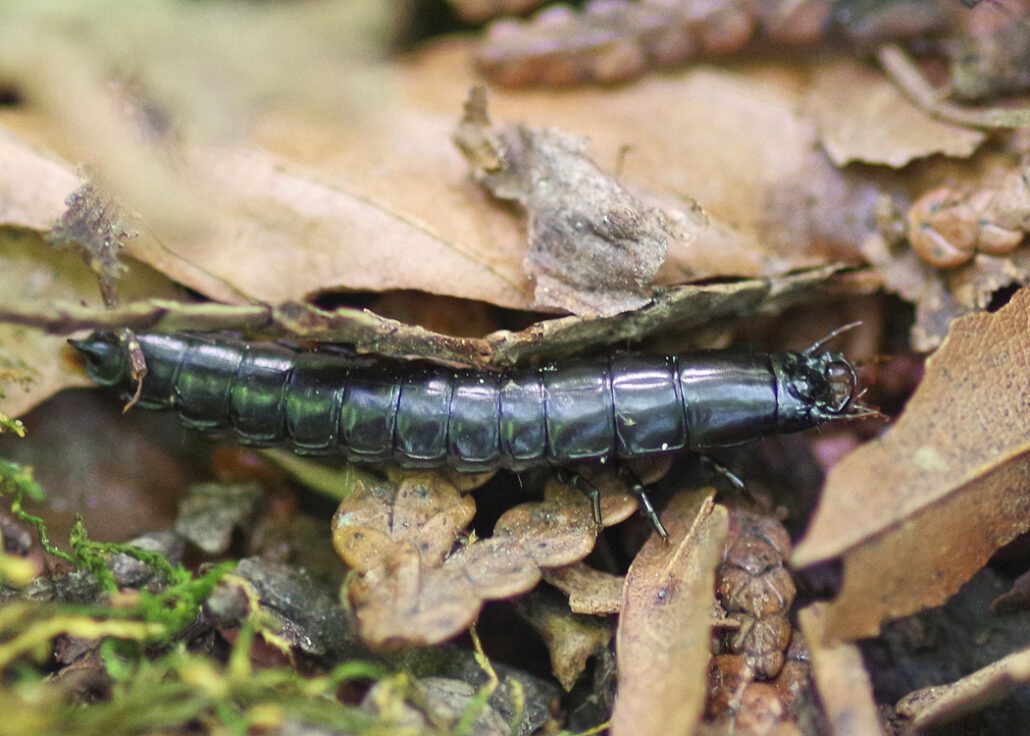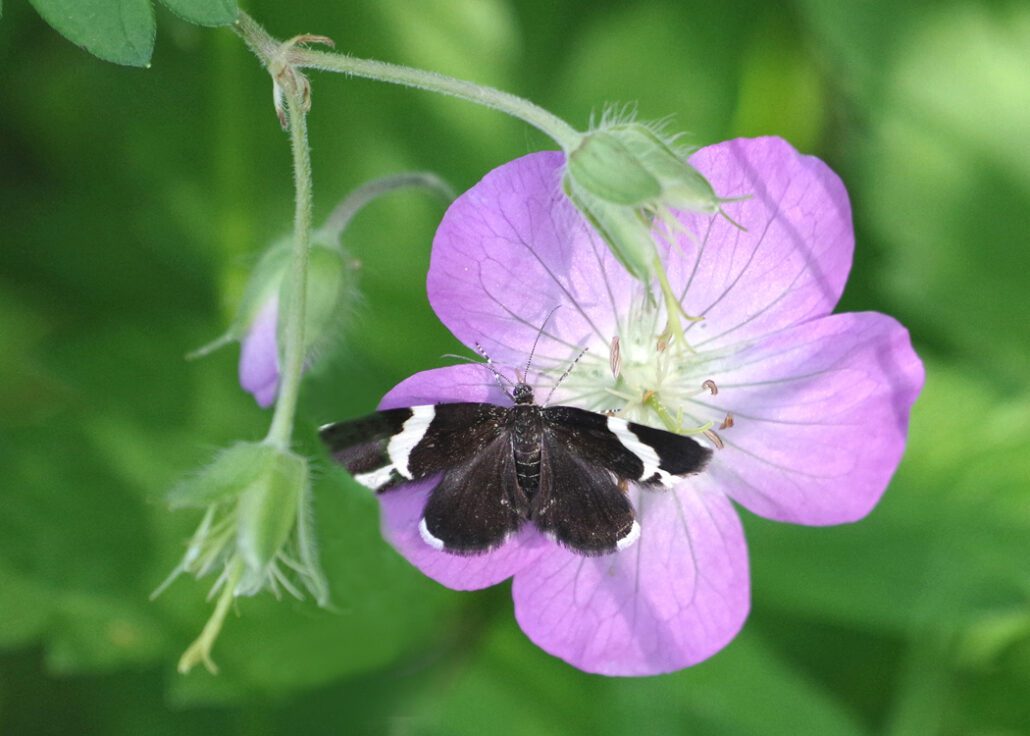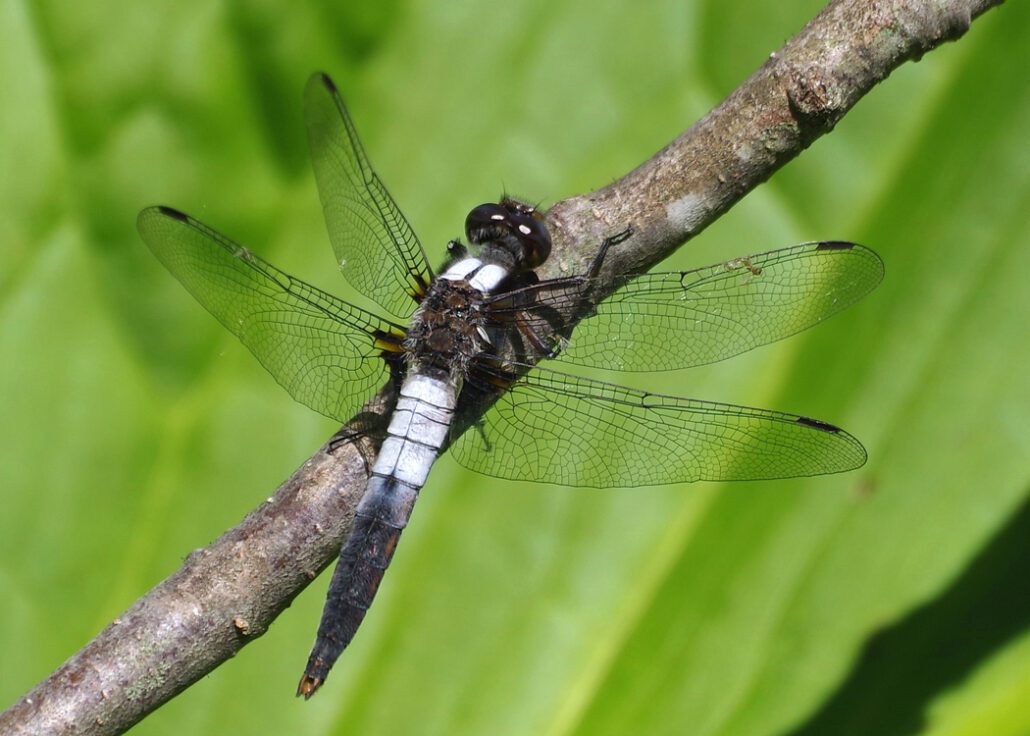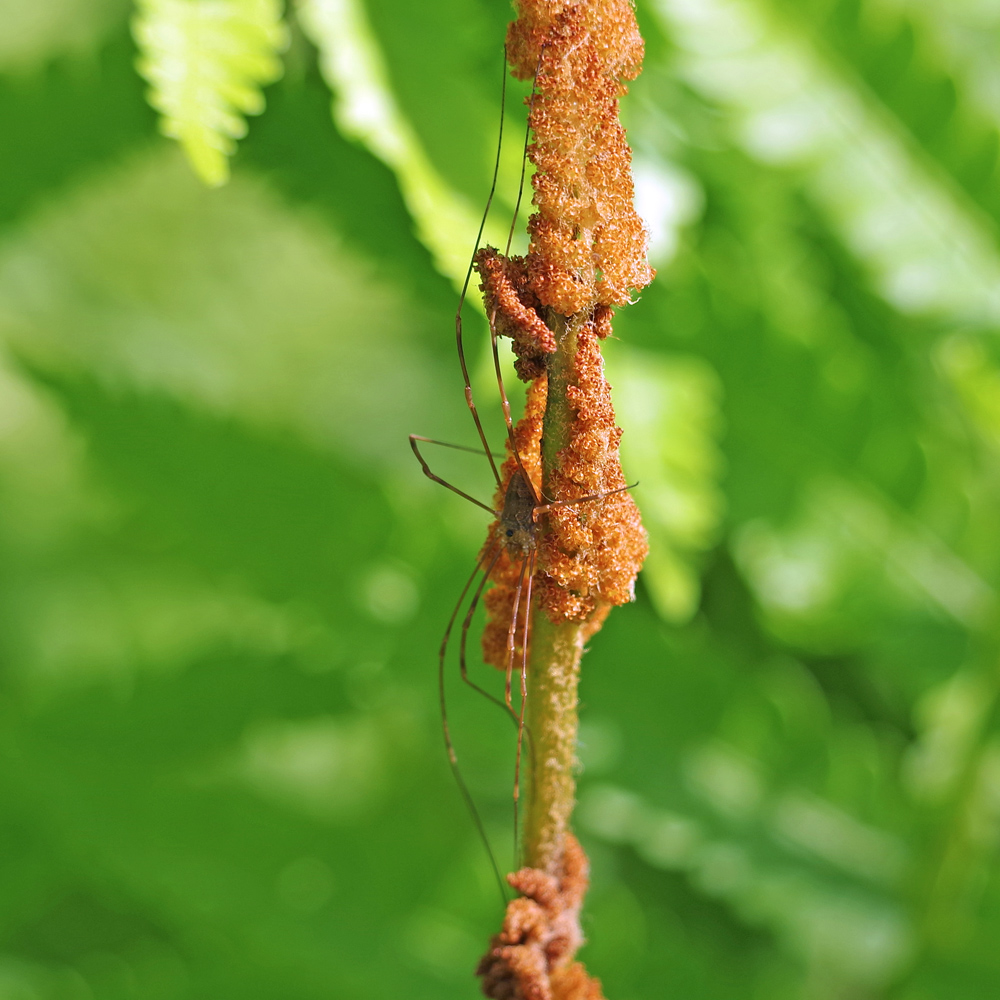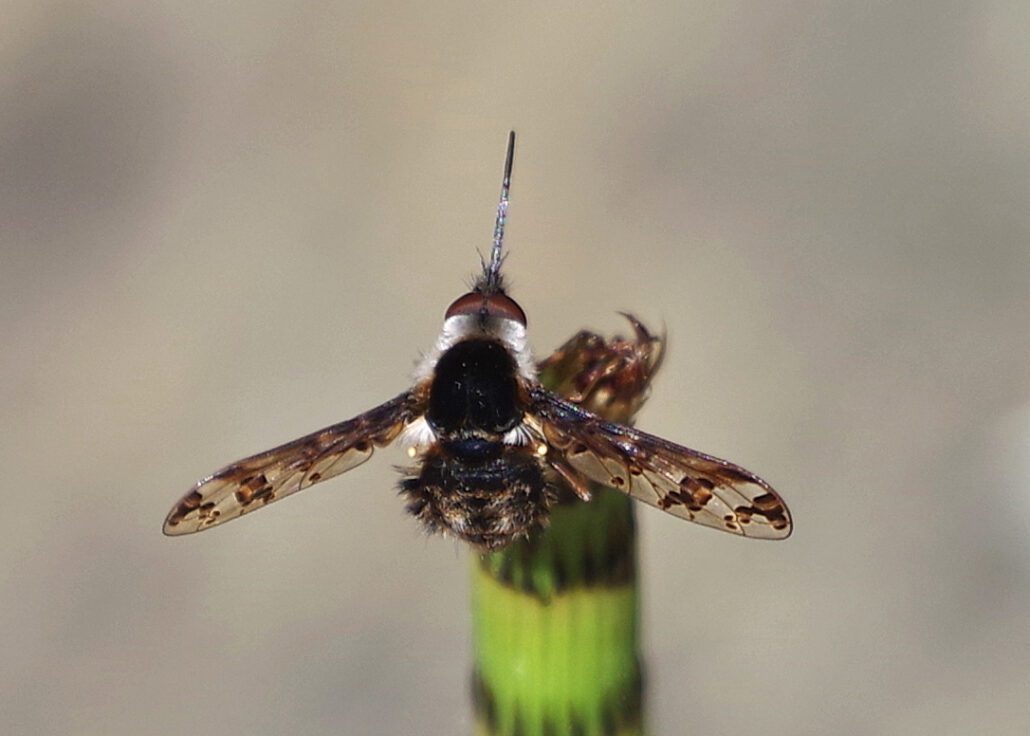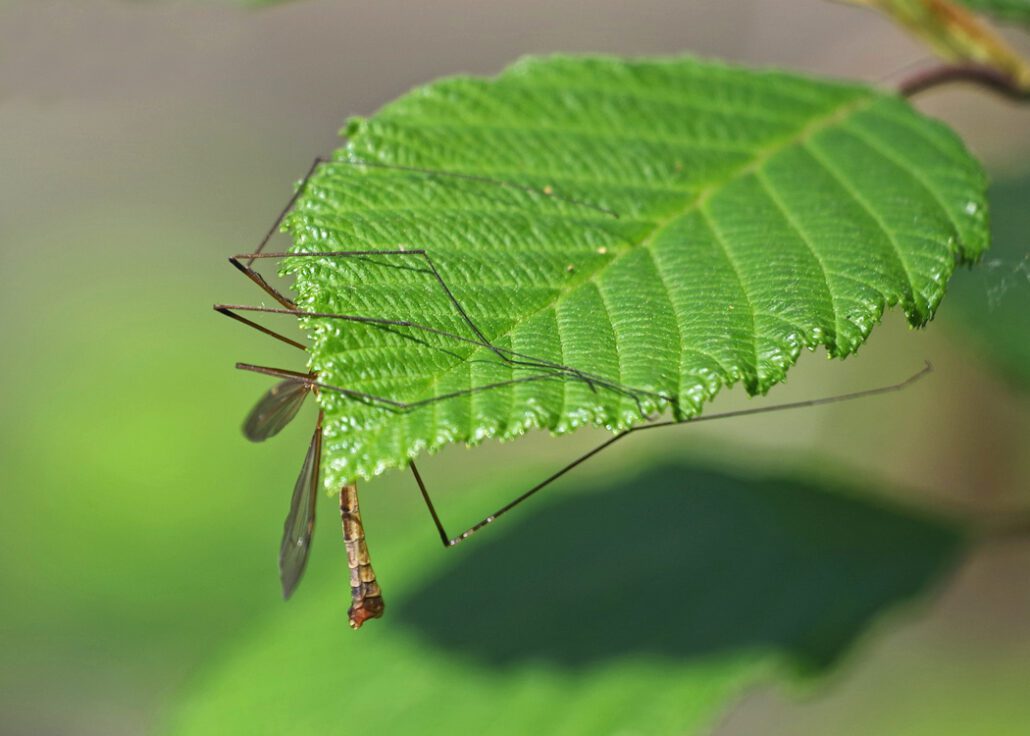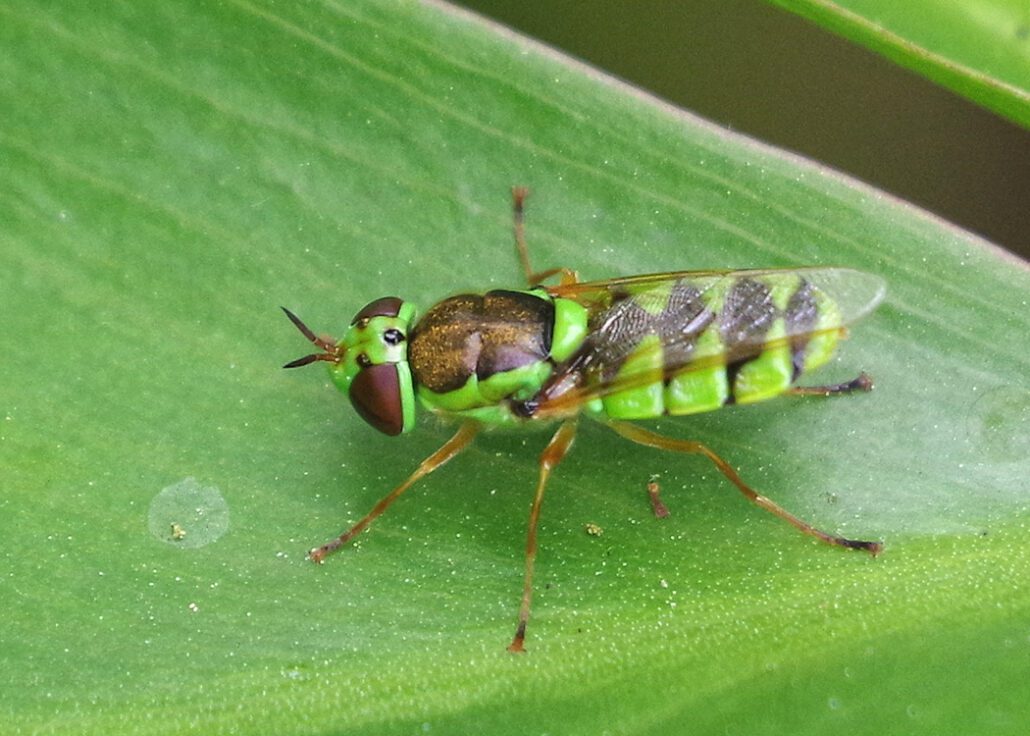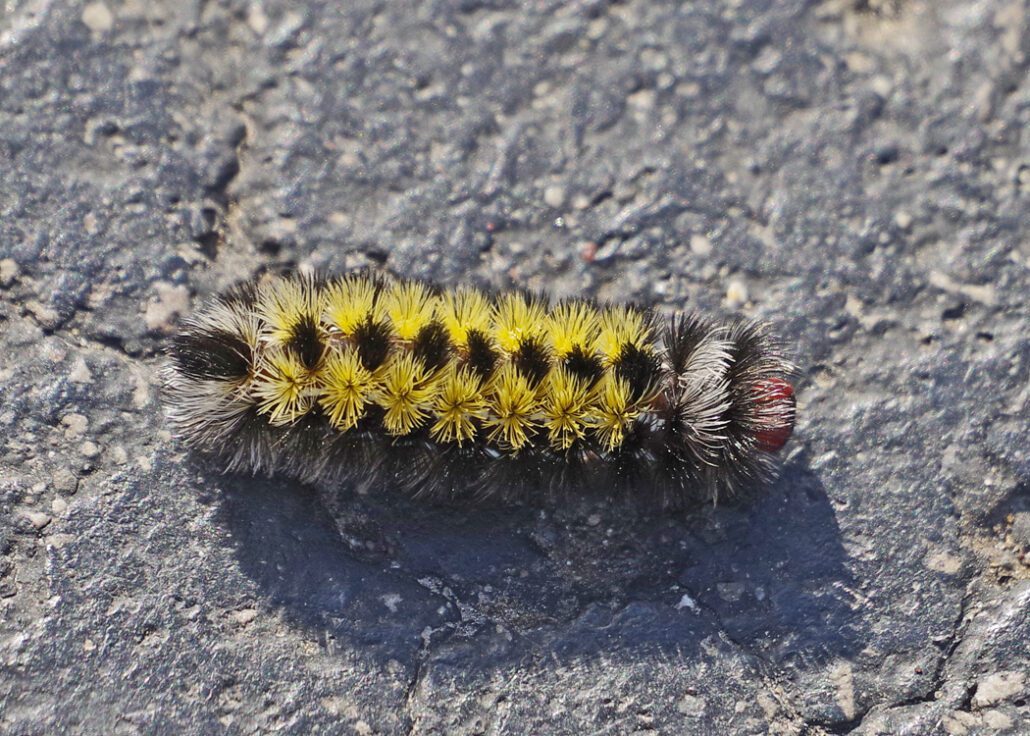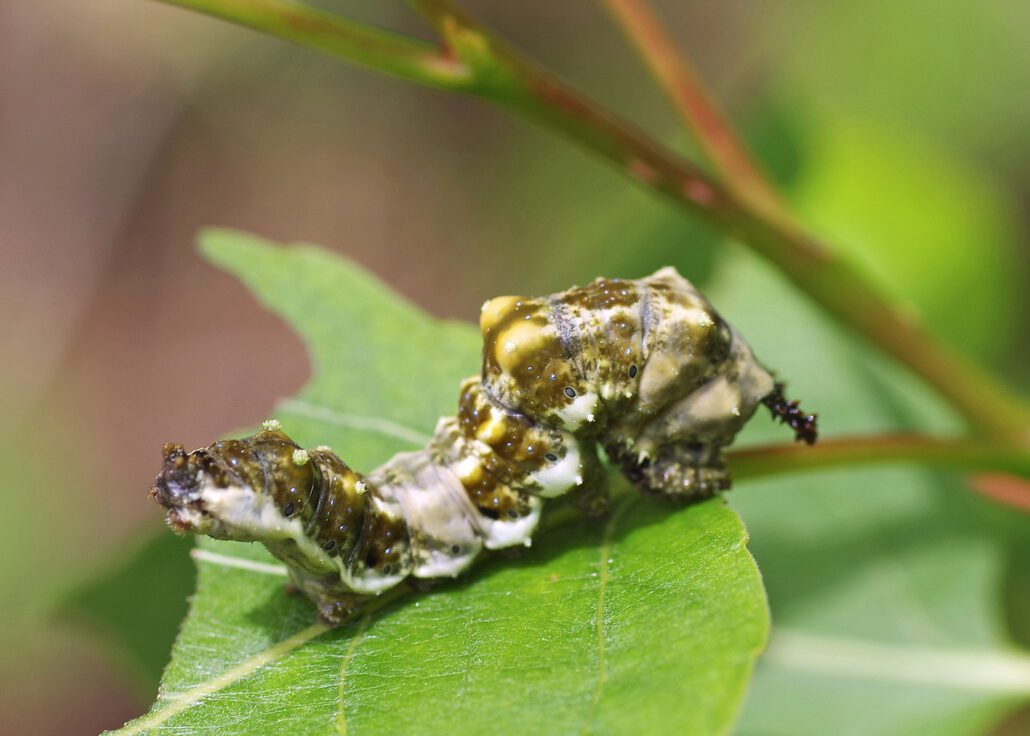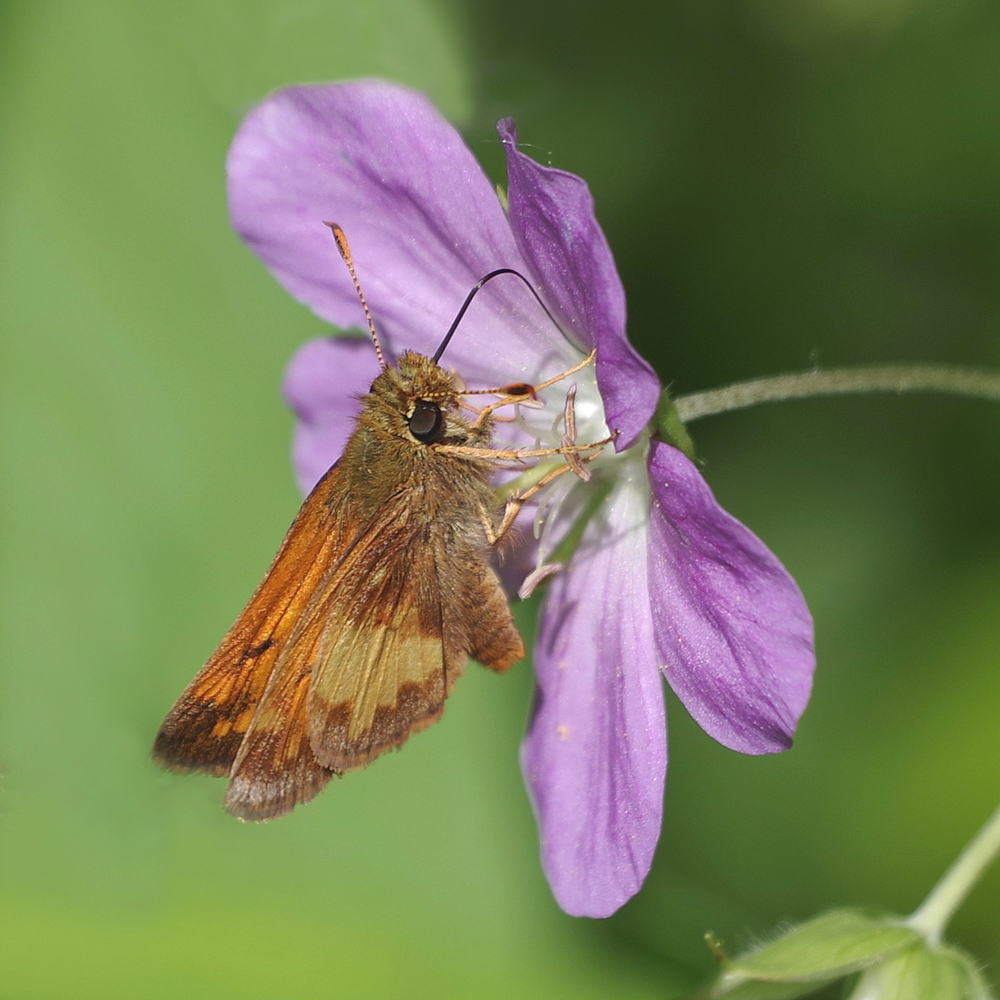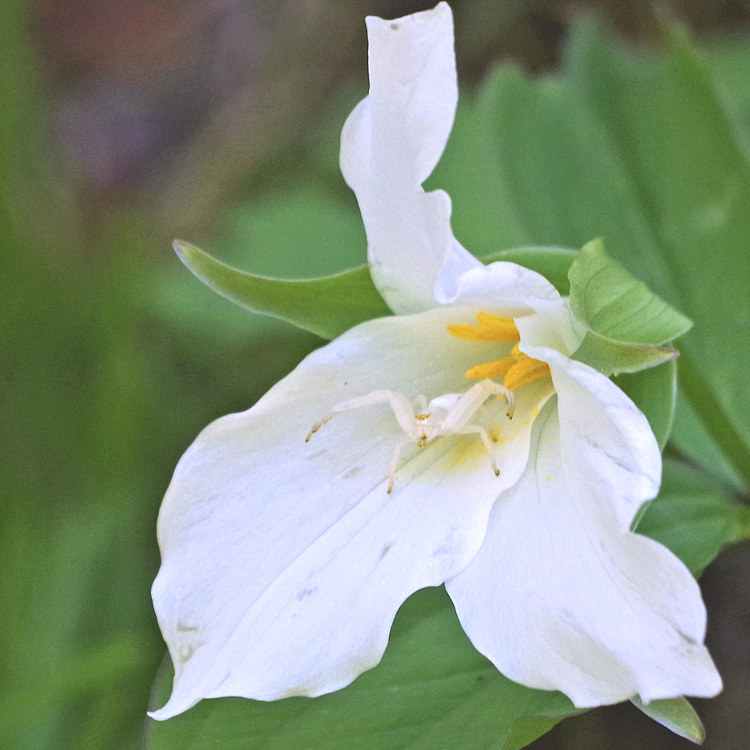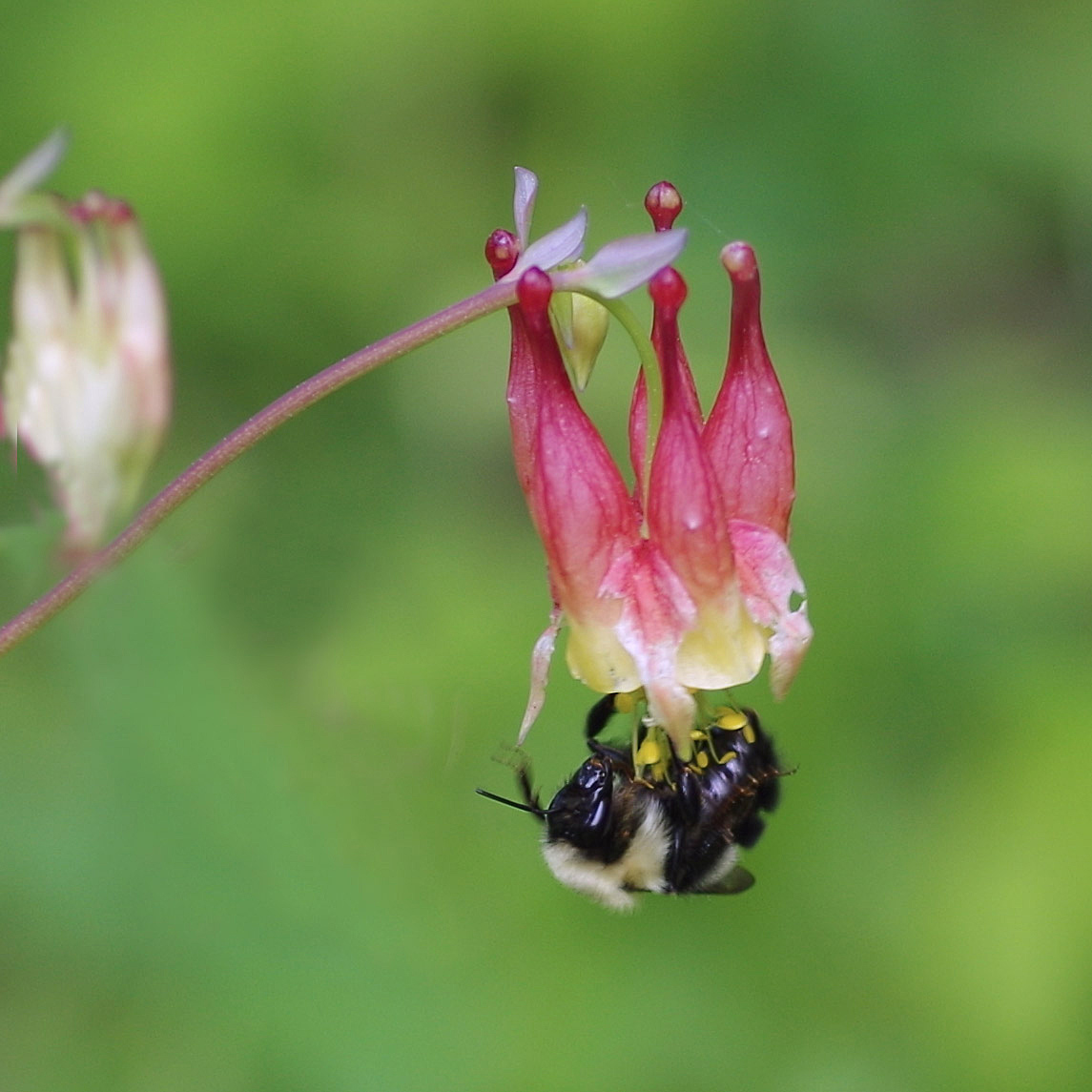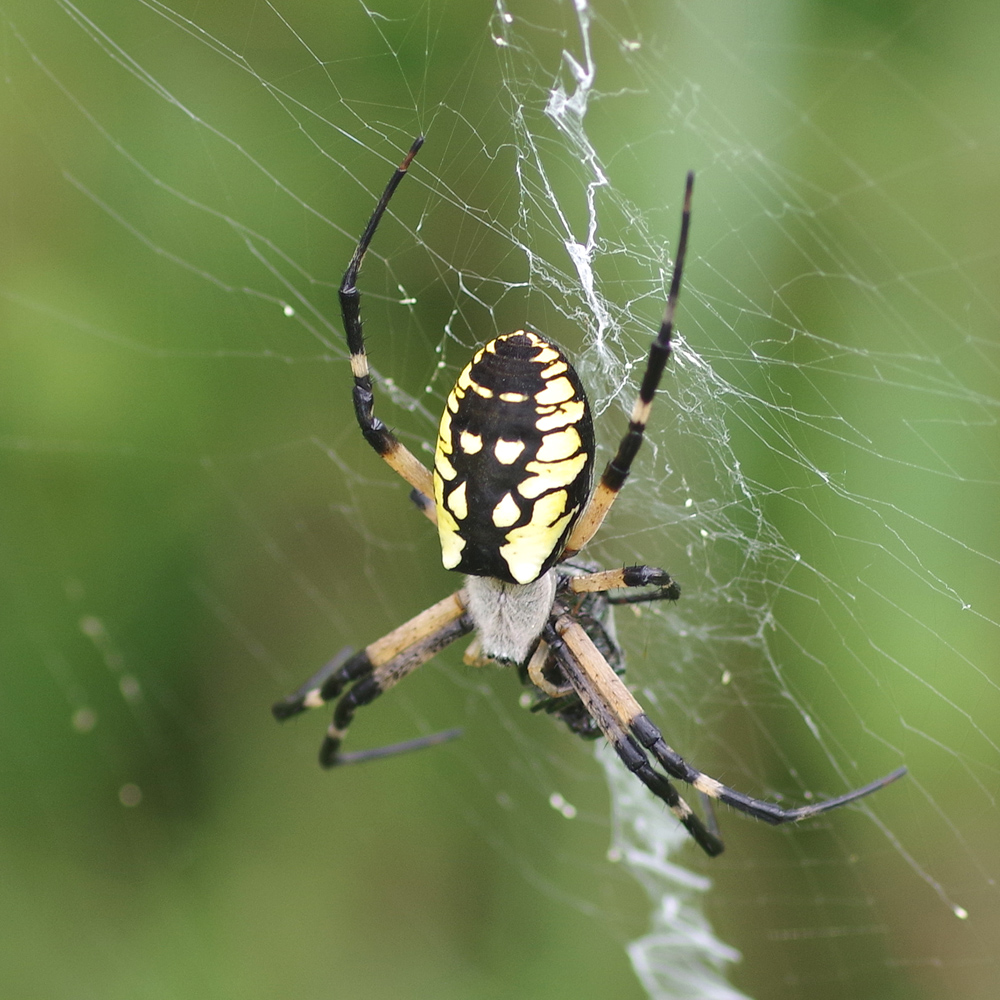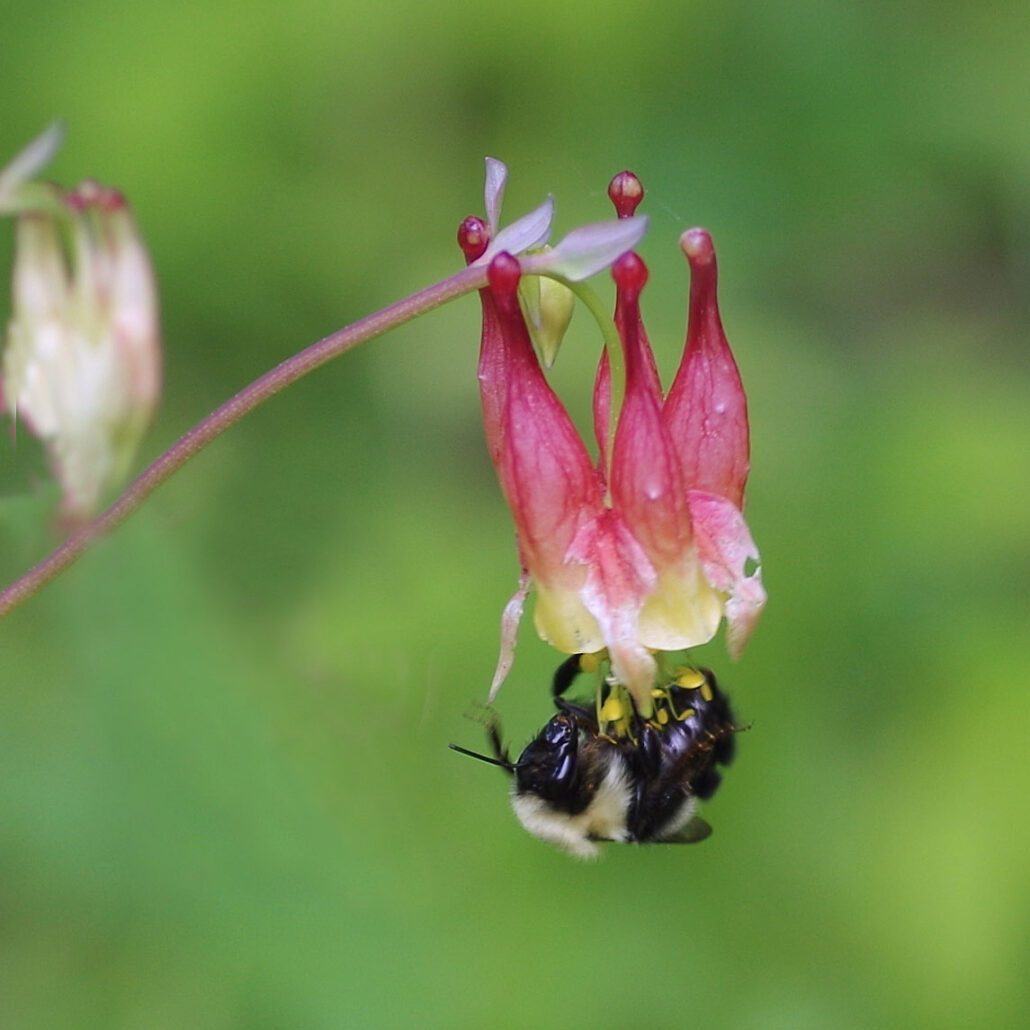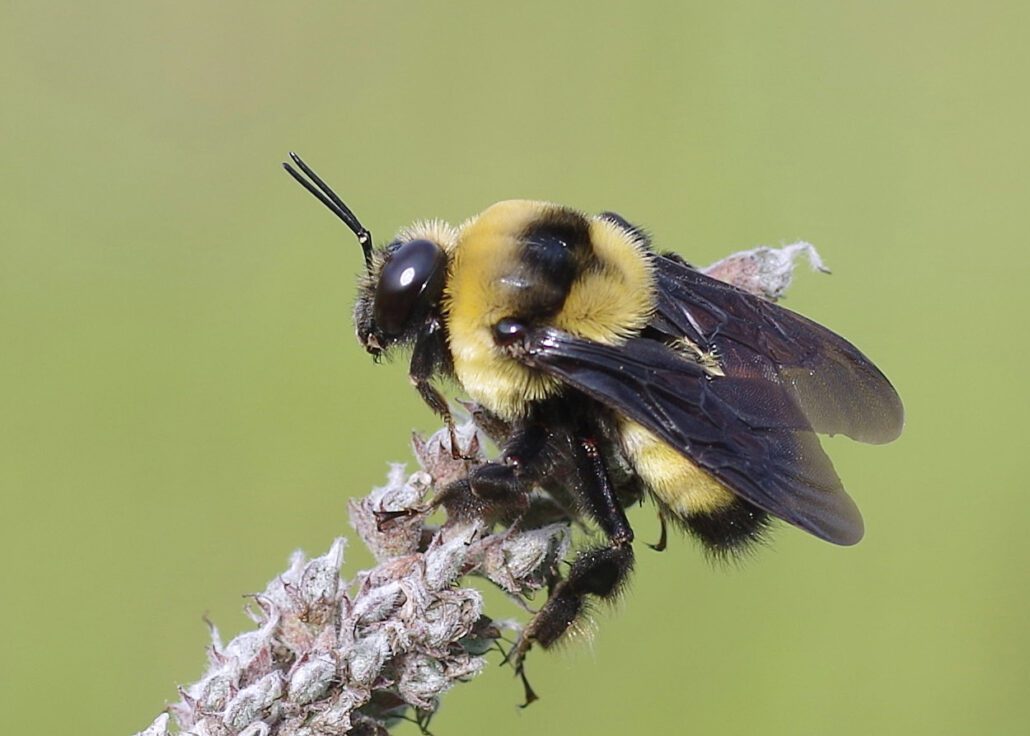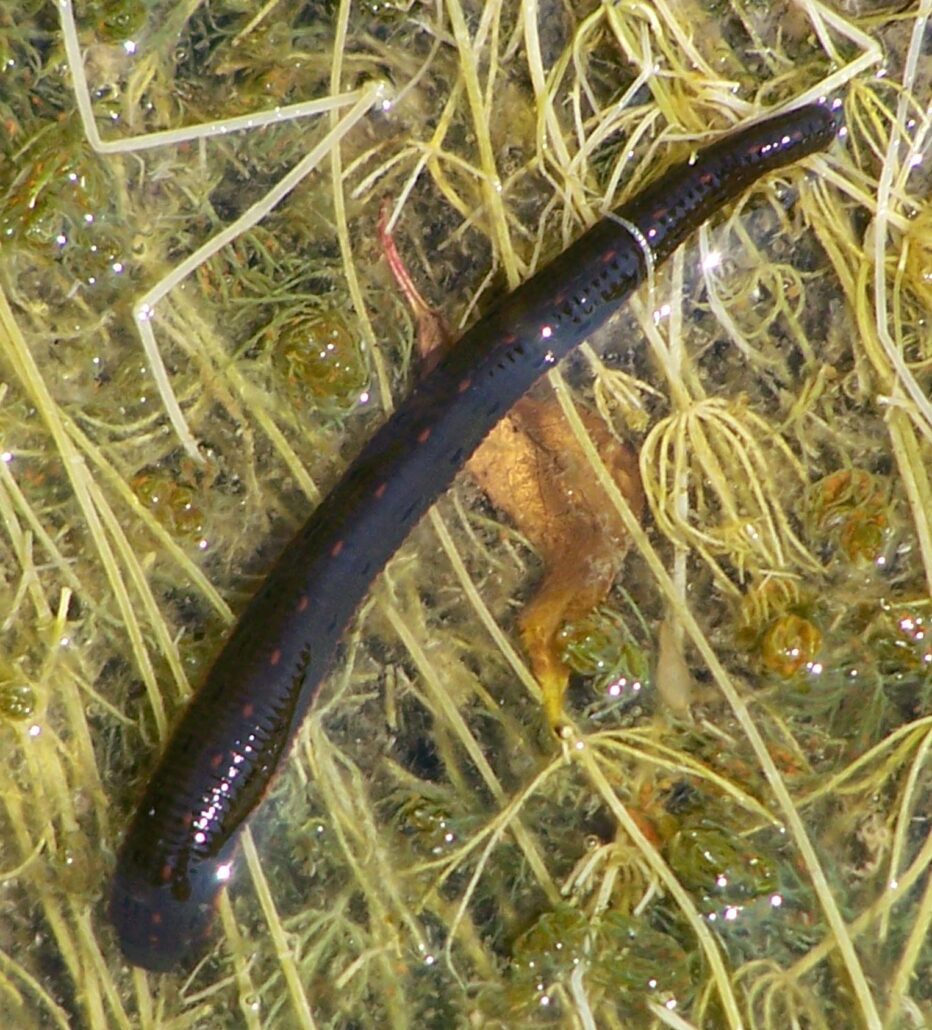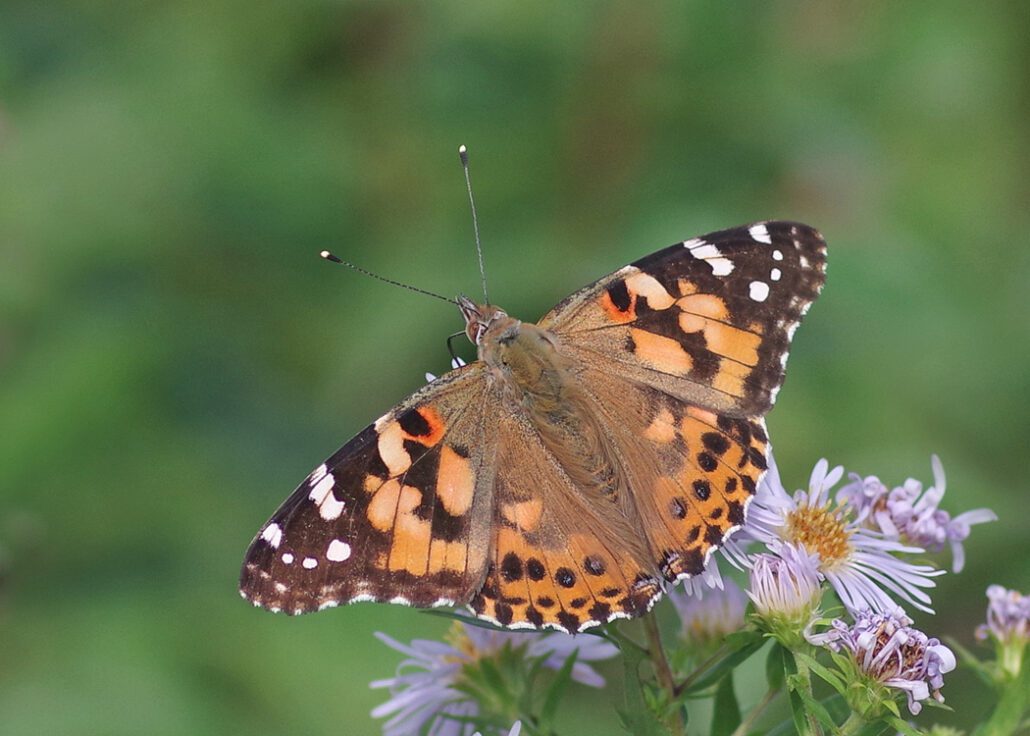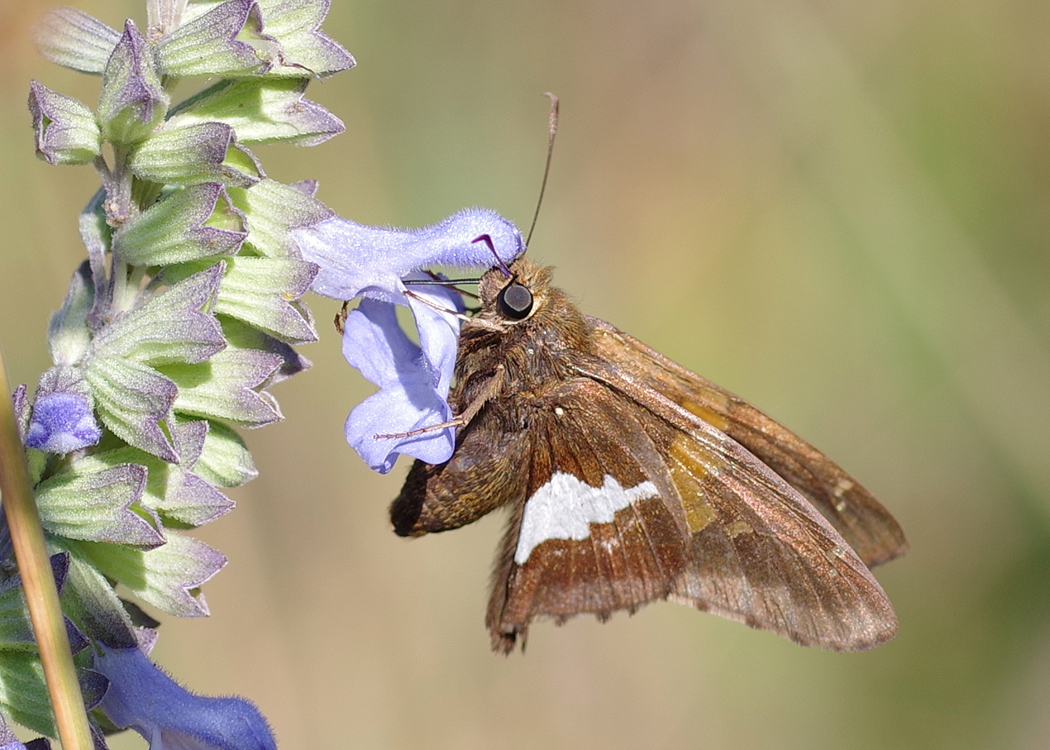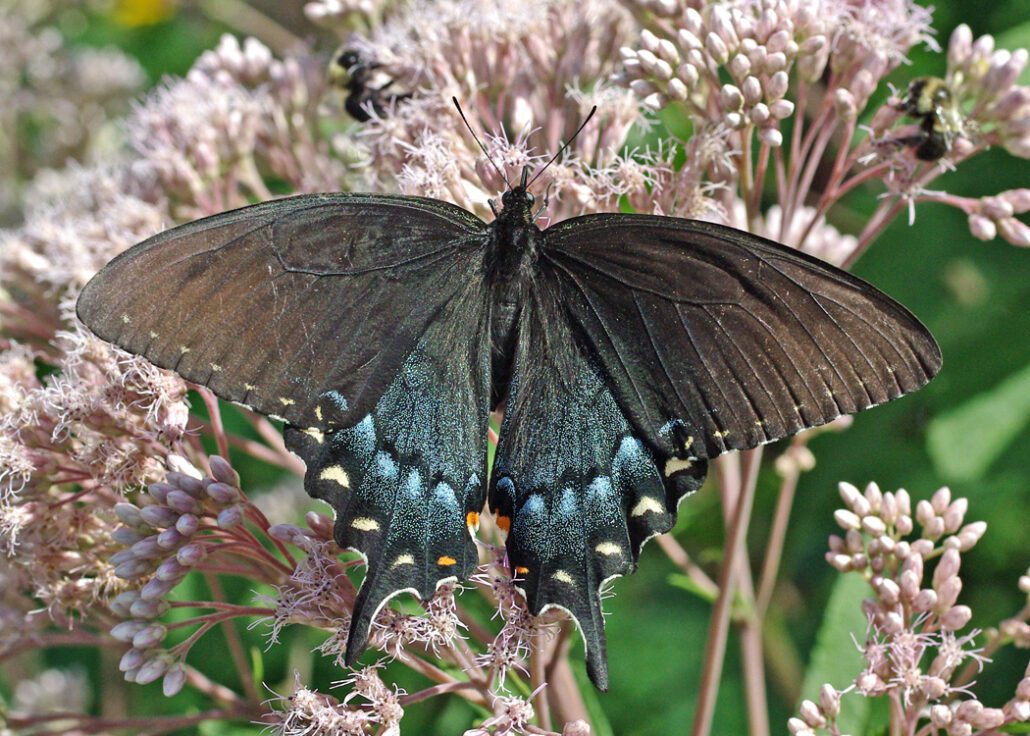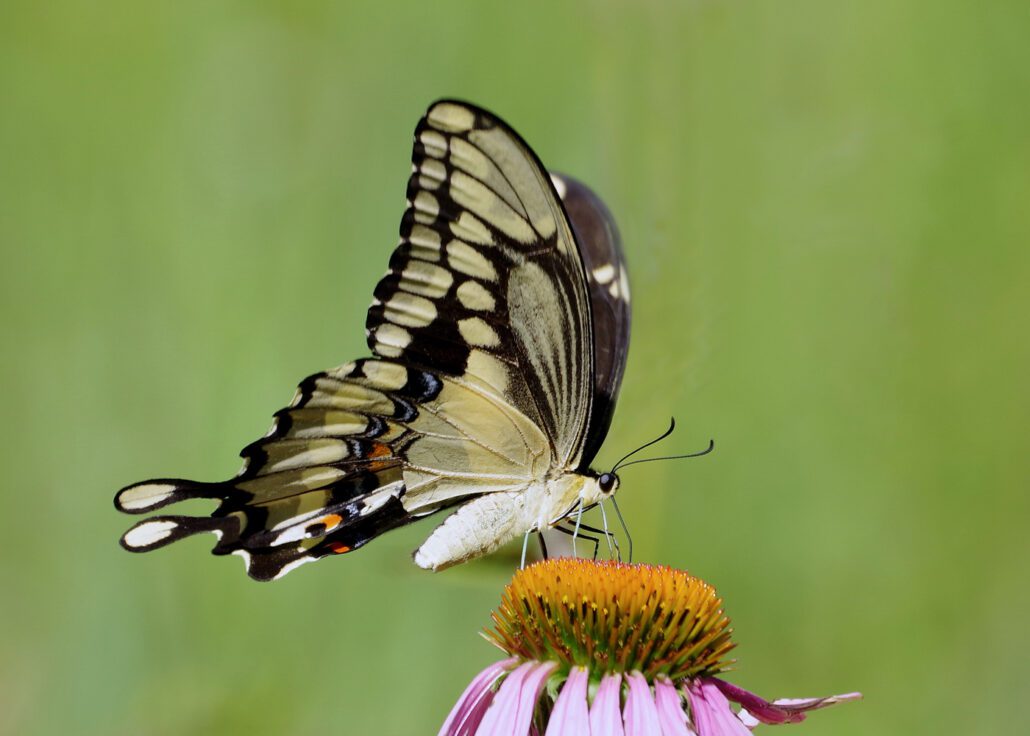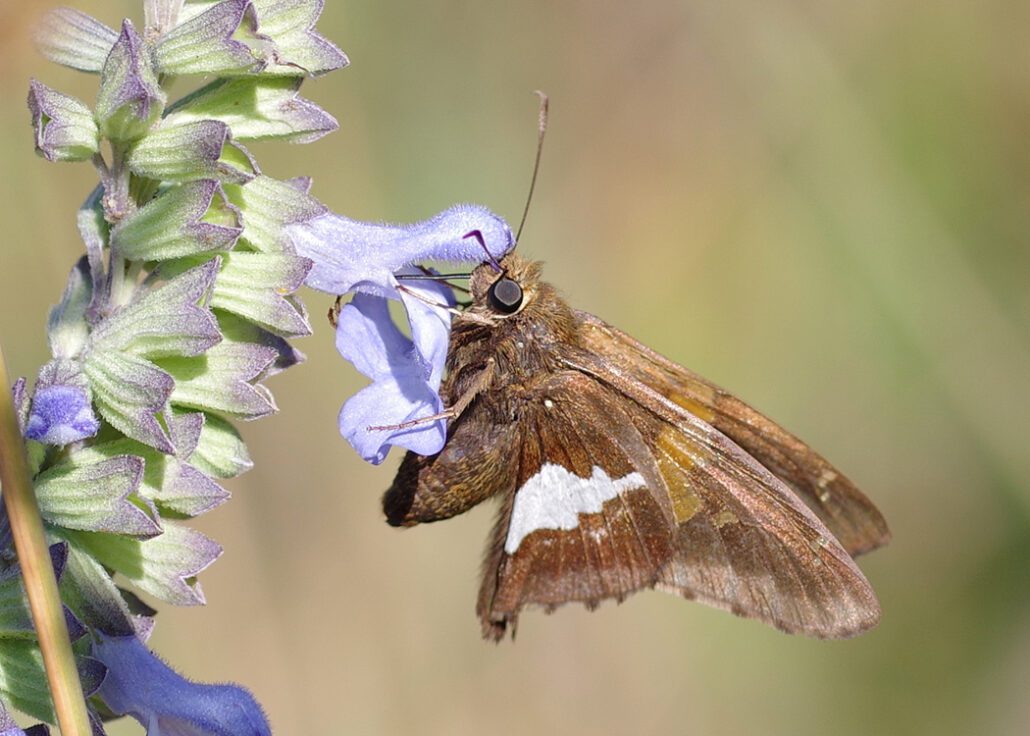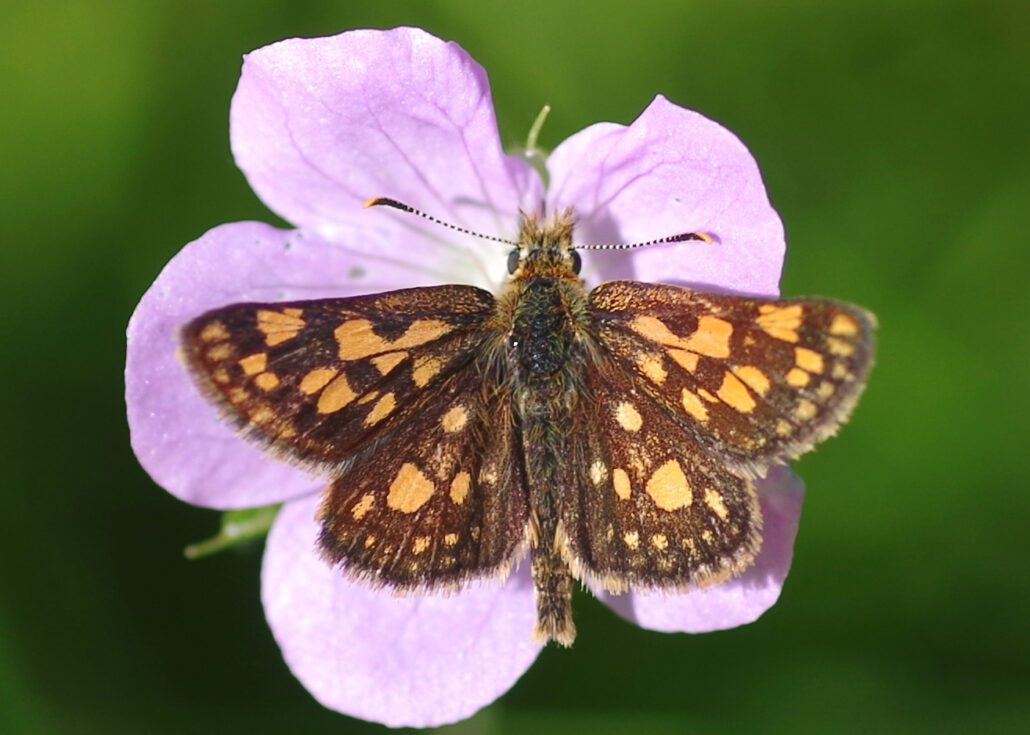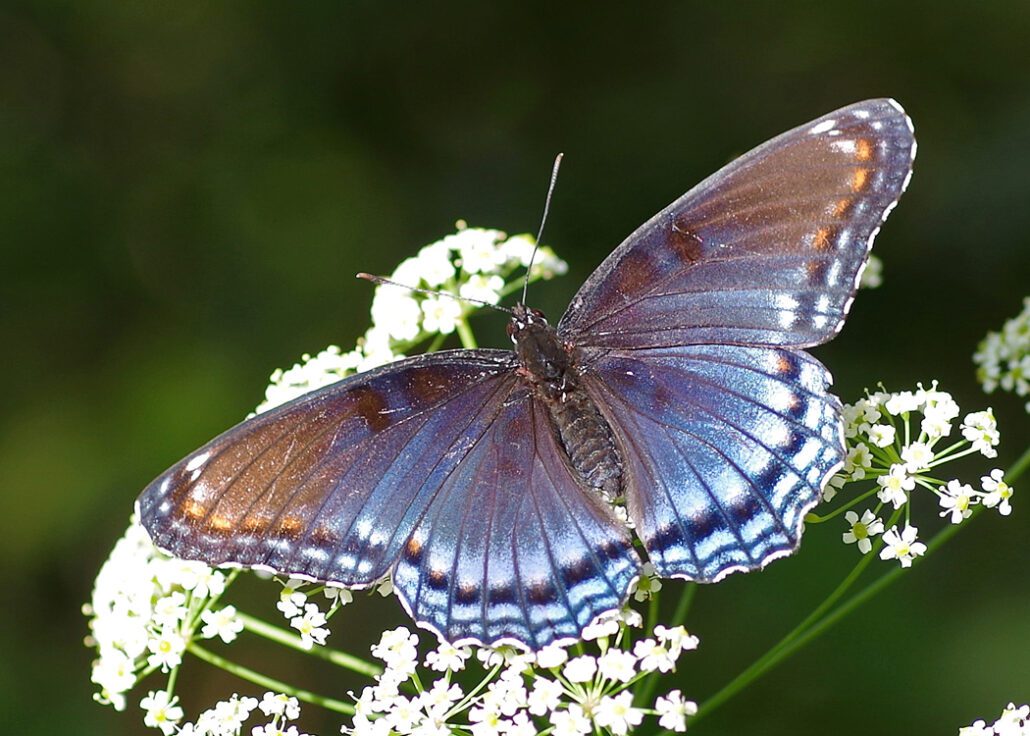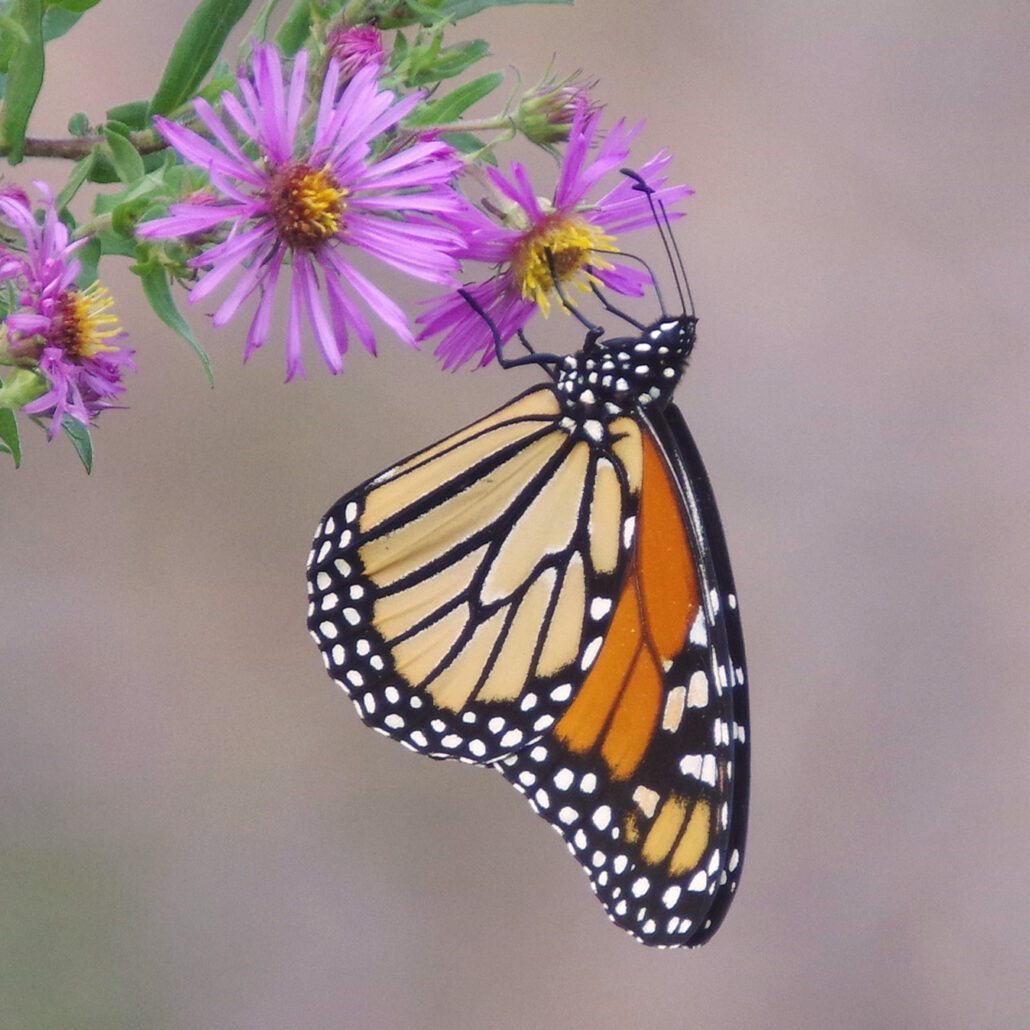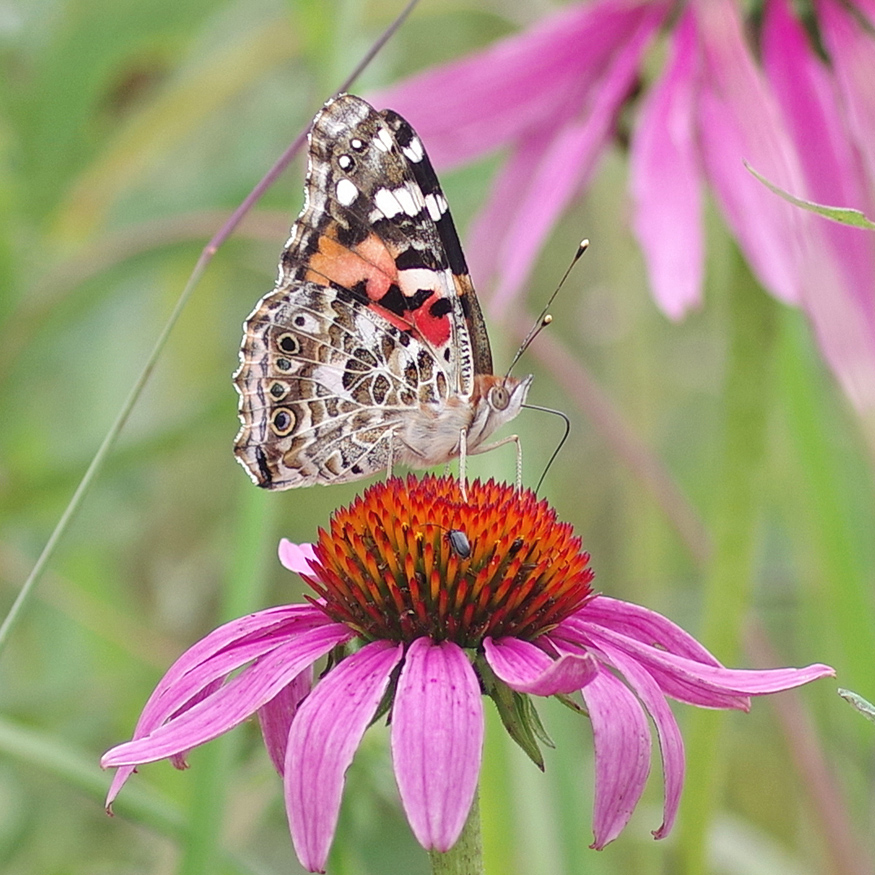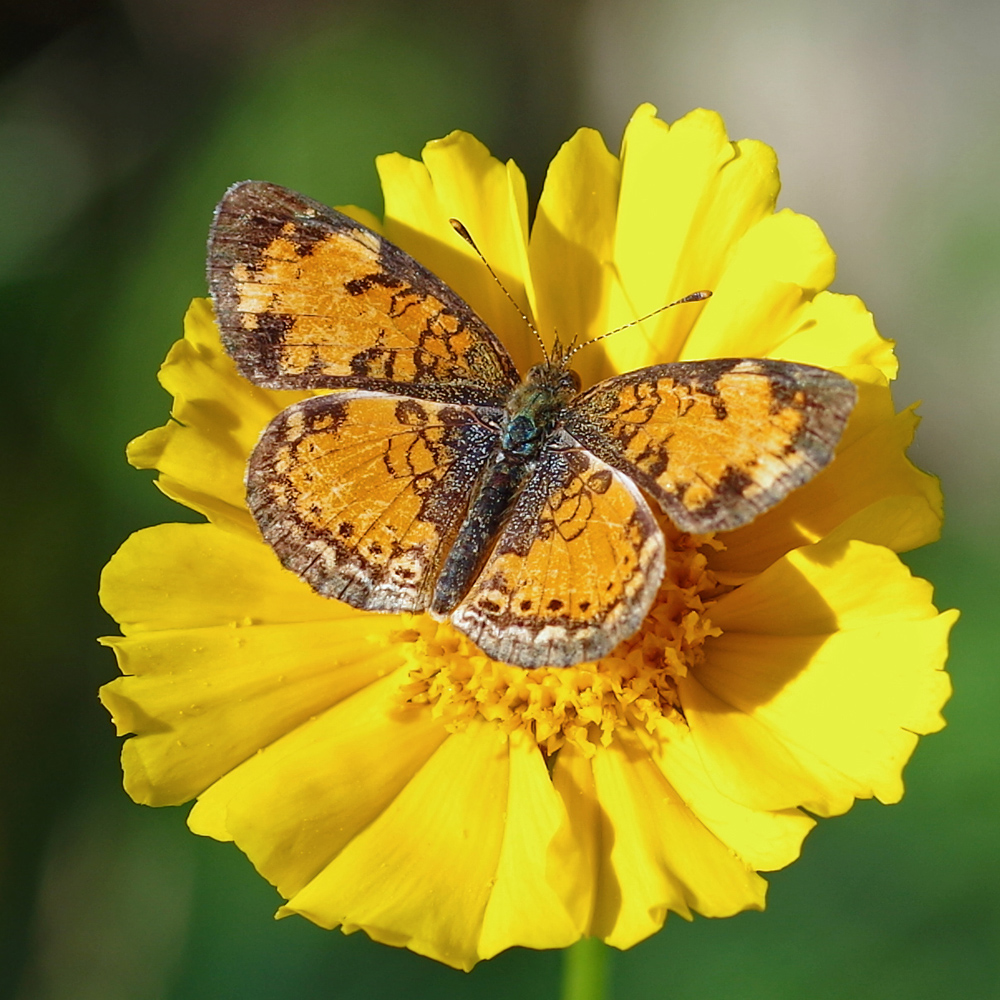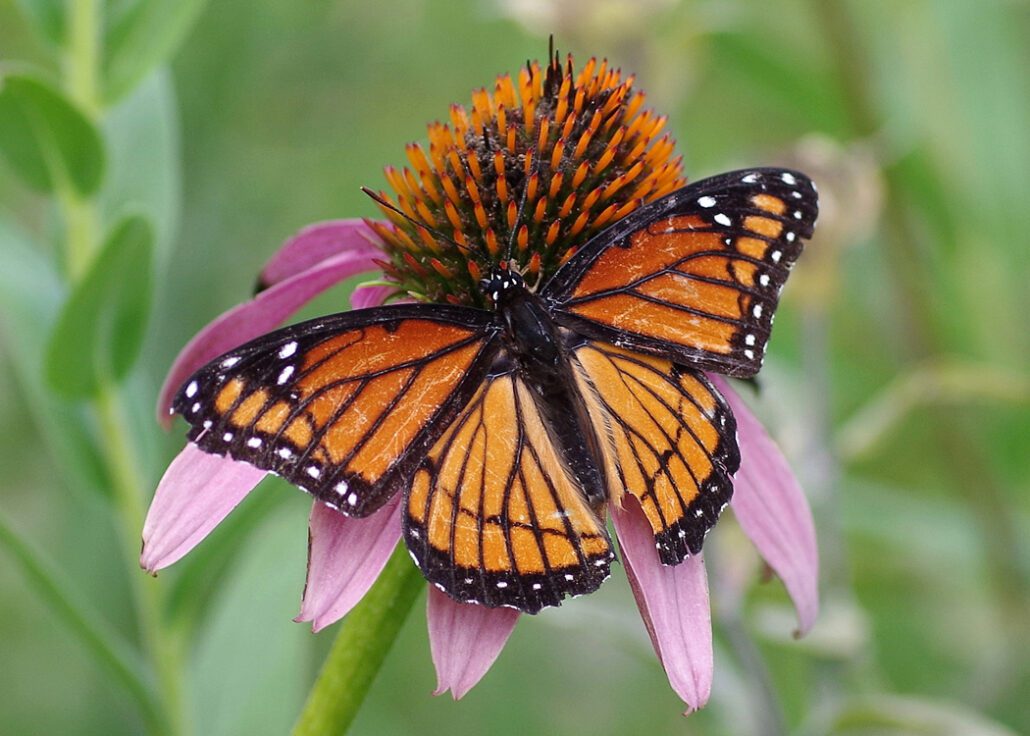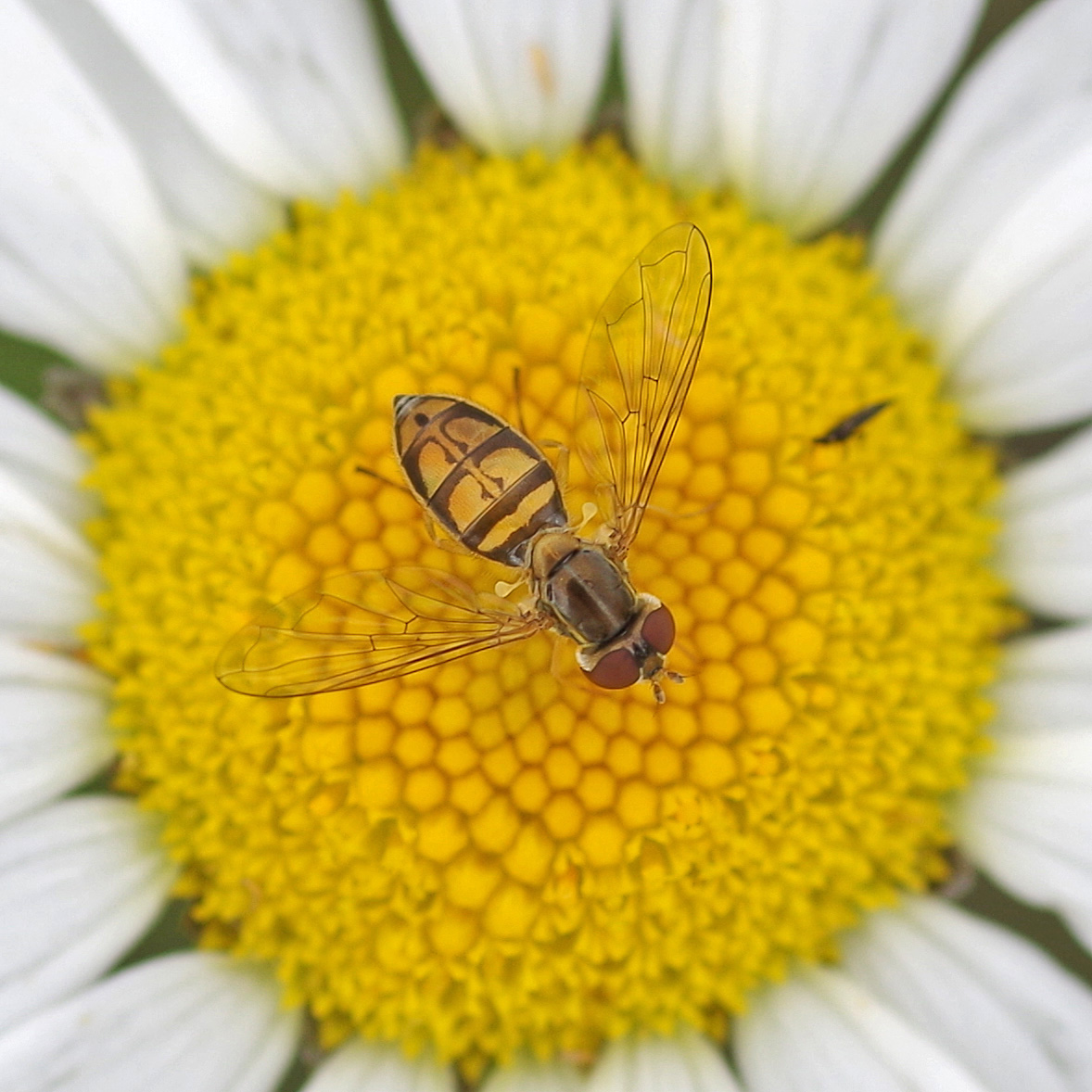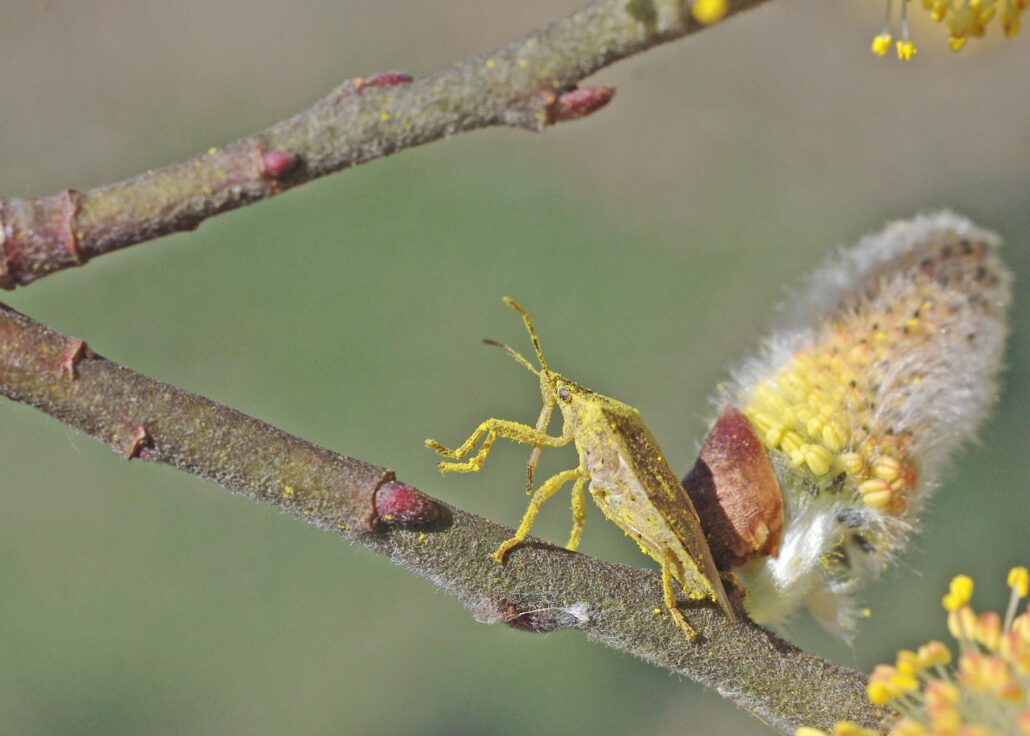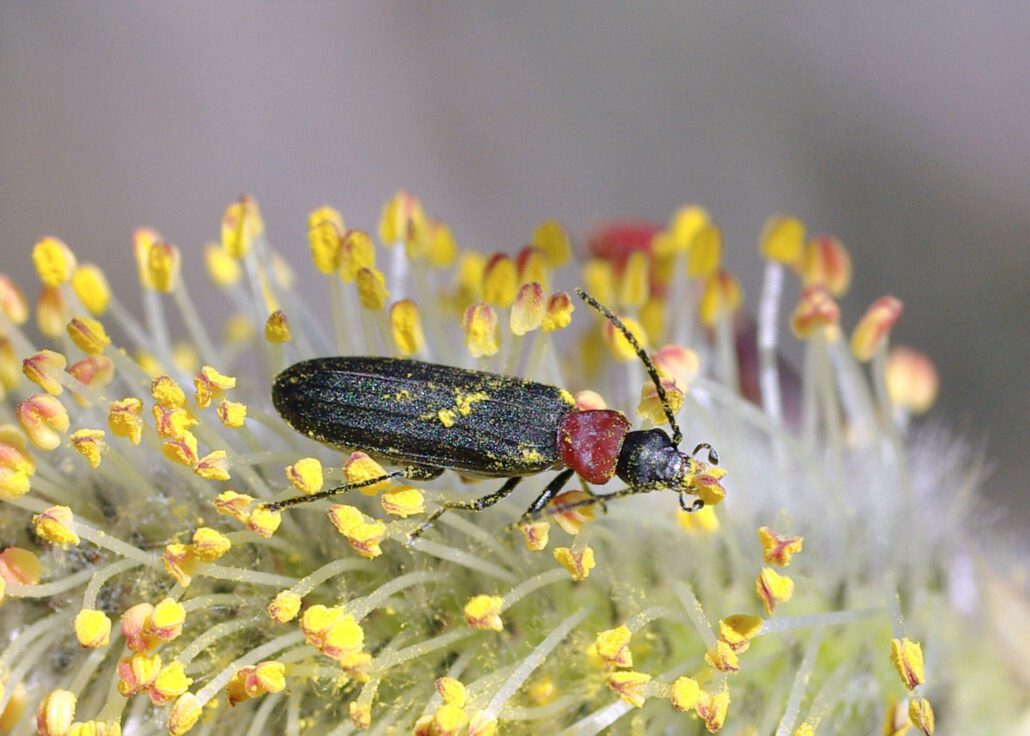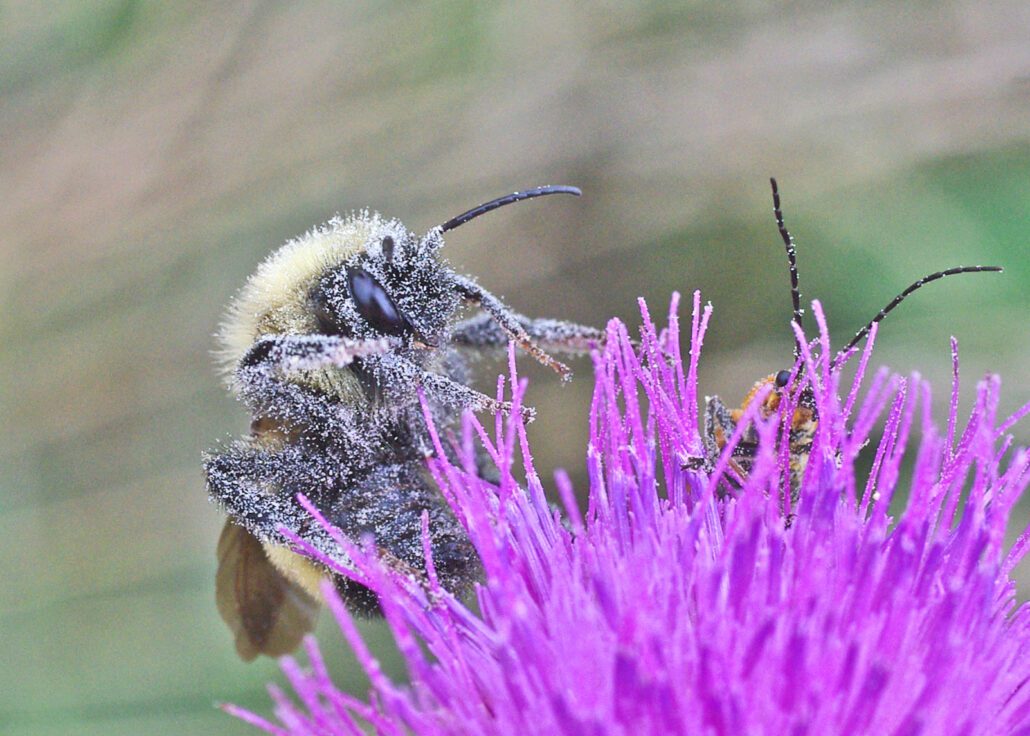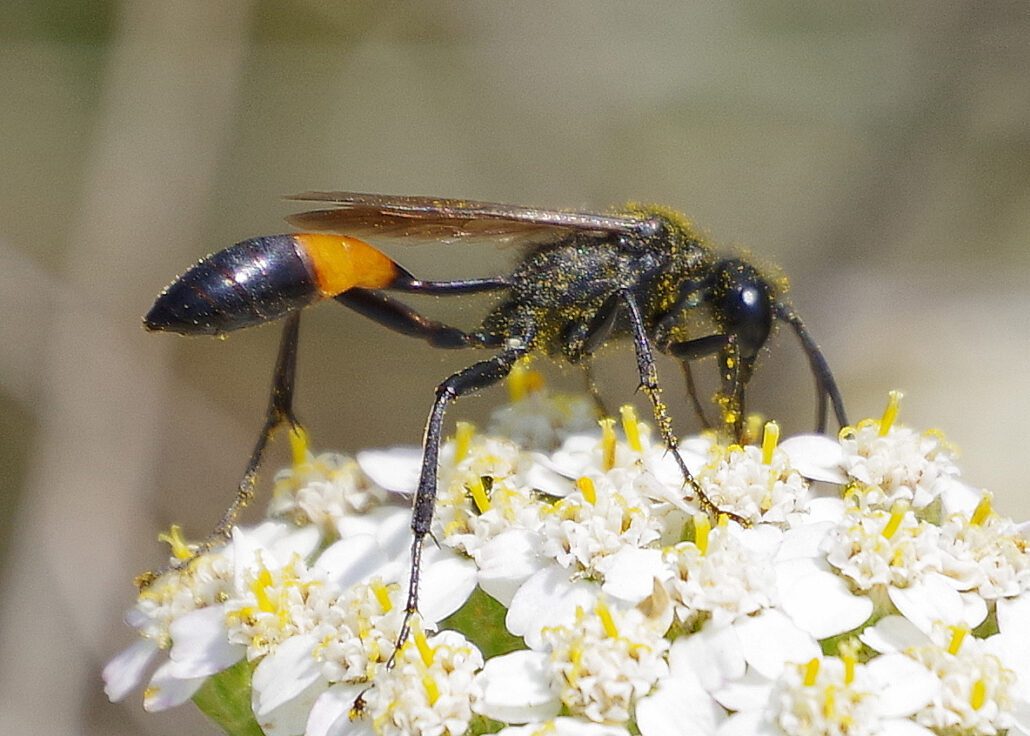by Kate Redmond
The Clover Leaf Weevil and Other Tales
Howdy, BugFans,
The BugLady has been playing outside, and she had trouble coming in long enough to write these stories.
STORY #1 – THE CLOVER LEAF WEEVIL. The BugLady took a few “throw-away shots” of this little (3/8” long) beetle as it crawled along a boardwalk in a wetland, and she made a few inaccurate guesses about its identity, but the sun was bright and she couldn’t really see the image on the screen, and then she and the beetle went their separate ways. Turned out to be a completely different beetle than she thought, one that apparently took a wrong turn at the start of the boardwalk.
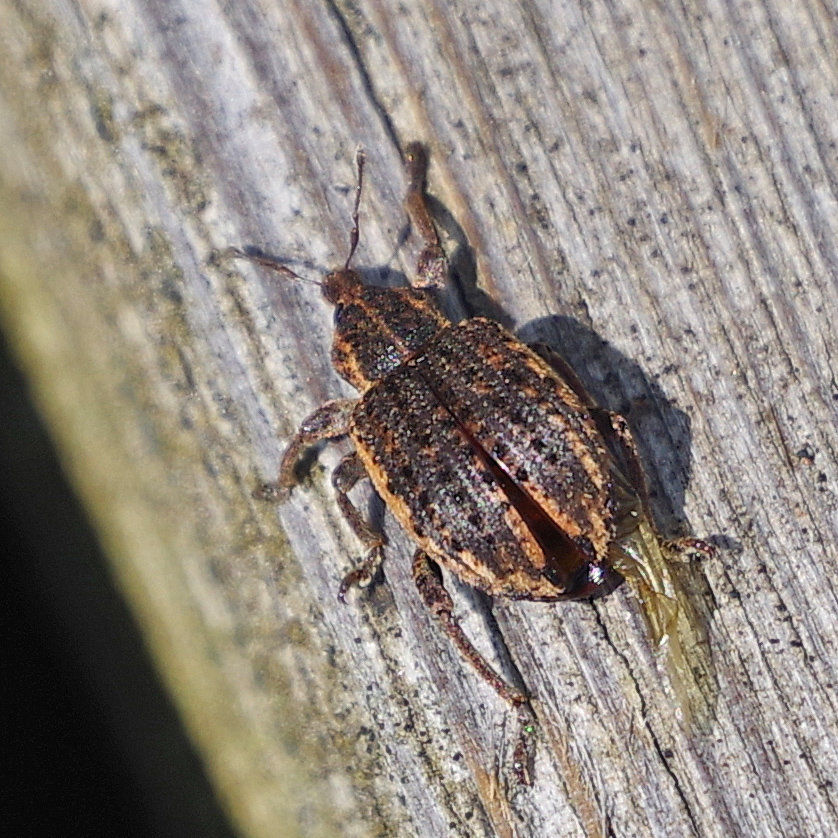
It was a weevil https://bugguide.net/node/view/859710/bgimage, a weevil that has gone through more than a dozen combinations and permutations of scientific names since it was first described in 1763 (“A rose by any other name….”) and that can still be found under multiple names in the contemporary literature. Some of the names resulted when the species was described and named by one person, but had already been described and named by another (18th century entomologists received specimens from contacts all over the world, and communication among them was slow). Other name changes happened when the family or subfamily or genus of the weevil was revised (and some of those changes were not embraced by others in the field). The BugLady gets the feeling that the dust has not settled on this weevil’s name.
The Clover, or Sandy, Leaf Weevil (we’ll go with Donus zoilus) is in the Snout/Bark beetle family Curculionidae. It’s the only member of its genus in our area, but there are a lot more genus members globally, and it’s not from around here. It was originally found in the “Palearctic realm” – Europe and Asia between the Arctic and North Africa/India. With a little help from its friends (us), it jumped the Big Pond and came to live in the Nearctic realm (North America between the Arctic and Mexico). It made its North American debut in Quebec in 1853, and now it’s present over about three-quarters of the country. .
Here are some glamour shots: https://bugguide.net/node/view/141240/bgimage, https://bugguide.net/node/view/859709/bgimage.
Its habitat is listed as grasslands, clearings, roadsides, and edges, and while adults may feed on a few plants that are not in the Pea family (the BugLady can recall no members of the Pea family along that boardwalk), the raison d’être for both adults and larvaeis eating agricultural clovers, especially alfalfa. Larval host plants include alfalfa, red, white, crimson, and alsike clovers, and sweet clovers (sweet clovers (the Devil Incarnate), of which they may consume as much as they can hold).
Both adult and larval Clover leaf weevils feed at night or on cloudy days, and shelter on/in the ground in the sunlight. The larvae/grubs https://bugguide.net/node/view/1535920 make small holes in the leaves. Most sources said that unless they occur in high numbers, they’re not a major crop pest (unlike the much smaller, Alfalfa leaf weevil). The grubs are parasitized by the larvae of this lovely little ichneumon wasp https://bugguide.net/node/view/1152272.
There’s only one brood per year – females place eggs in and around the host plants in fall. Most eggs hatch then and the larvae overwinter, feeding when it’s warm enough and resting when it’s not, then pupating https://bugguide.net/node/view/1535924 and becoming adults in spring. Any eggs that overwinter hatch in spring. Newly-emerged adults feed and then aestivate (suspend operations) for part of the summer, reactivating and laying eggs in fall https://bugguide.net/node/view/1655976/bgimage. Larvae chew on plants in spring, and adults chew on plants in fall.
STORY #2 – RECENT SPIDER ADVENTURE. The BugLady headed to the laundromat the other day. She got a few miles down the road and noticed (belatedly) a Cross Orbweaver on a strand of web on the inside of the driver’s side window (“along came a spider and sat down beside her…”). She found an uninhabited side road and pulled way over to the left, so the side of the car was in grass, opened the window and nudged the spider out, hoping to move it away from the car. When she got to the laundromat, the windblown spider was curled tight, clinging to the side of the car below the mirror. It stayed there while the laundry went around, and then held on for the ride home. The BugLady lifted her off with a leafy twig, and the spider recovered on the porch rail. Spiders are tough!
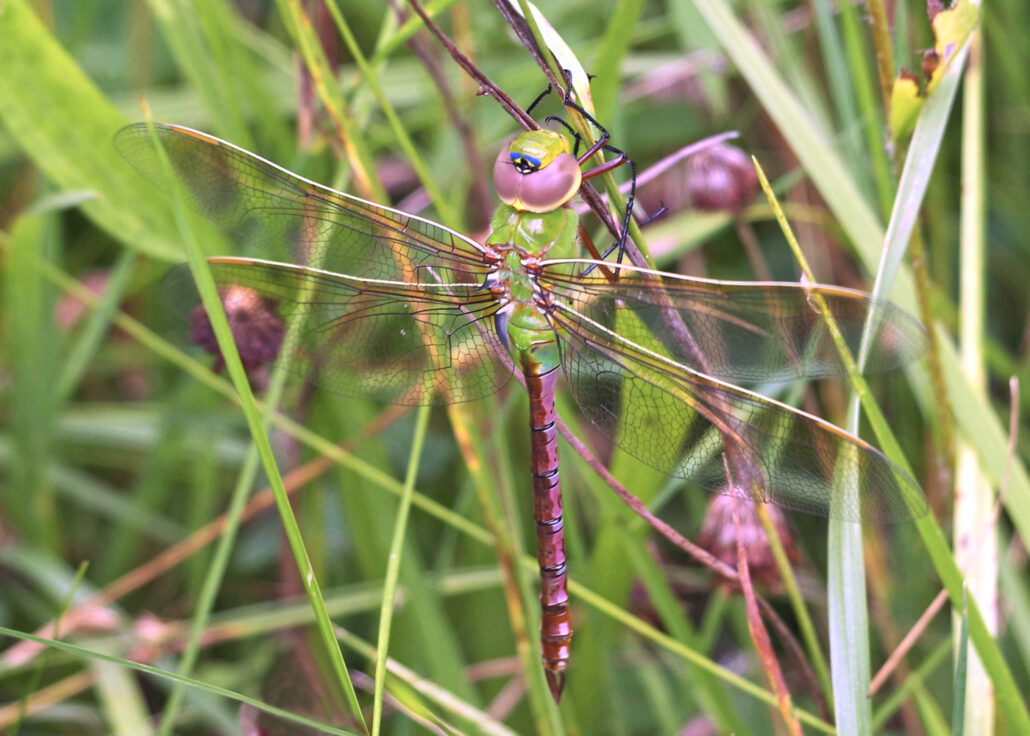
STORY #3 – AN EXUBERANCE OF DRAGONFLIES. We experienced a wonderful, three-day dragonfly migration from August 30 into September 1, and in the run-up to that migration, the BugLady enjoyed some amazing walks through big feeding swarms, with darners cruising past, inches away. As she went out to the hawk tower on Sunday, darners and saddlebags were in the air everywhere, with even more jumping up from the grass as she passed. When she scanned for incoming hawks, the view through her binoculars was dragonflies as far out as she could see, in all directions. Magic! Abruptly, at 1:00 PM, the wind shifted a bit and it was over, and only the stragglers remained.
Go outside, look at bugs!!
Kate Redmond, The BugLady
Bug of the Week archives:
http://uwm.edu/field-station/category/bug-of-the-week/

